Did you know that URLs are important for SEO and they can improve your user experience, ranking, and indexing of your website? And many bloggers, website owners, and even SEOs are making tons of mistakes and don’t create SEO-friendly URLs for their web pages.
In this article, you will learn how to create an SEO URL for any of your web pages and blog posts and increase your ranking and organic traffic by applying the best practices for SEO URLs.
So let’s get started!
What is URL?
Uniform Resource Locator (URL) is an address of a website and its pages for search engines and browsers to retrieve any published resources on the web. URL was created primarily for online users as a “nickname” to navigate easily around the internet to hide website IP addresses that are used by computers to communicate with each other.
Just like with home address. Instead of writing home coordinates to send a slow mail, you are using a home address that is easier to remember and find for the postman.
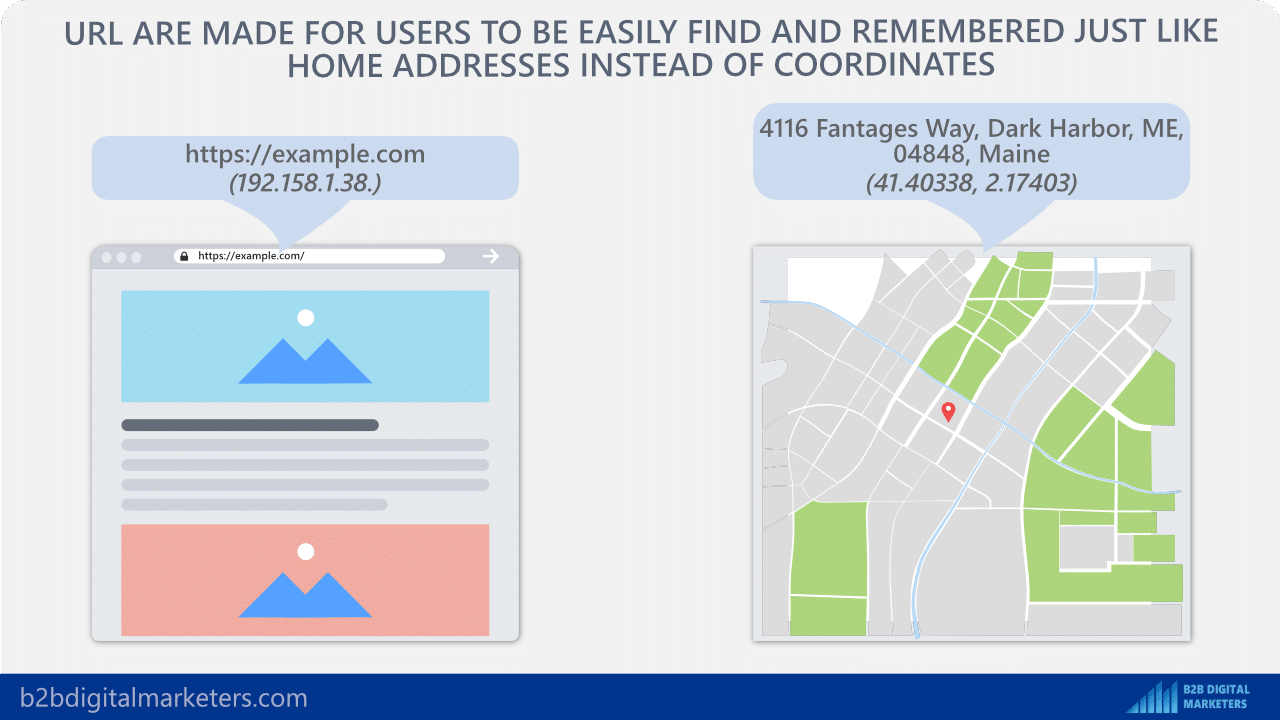
Anatomy of a URL
URL is made up of many different components used by users and search engines to easily find information and identify the purpose of the content.
It’s also used by webmasters and SEOs to help users and search engines to better understand the content on the website by using descriptive names within the URL and semantically categorizing it.
For example, SEOs are using fragments/slugs to include primary keywords to help search engines index the content, thus improving ranking. However, all the parts of the URL are essential for SEO.
And in this infographic you can better understand the anatomy of the URL and what’s the purpose of each element within the URL:

Why is URL Important for SEO?
URLs are playing a significant part in your SEO and can be used in numerous ways to increase your ranking, CTR, and search visibility.
And you shouldn’t definitely neglect your URLs like so many bloggers and webmasters do and here you have three important reasons why:
Reason #1: URL Helps Improve User Experience
The first reason is that URLs help to improve user experience.
URLs were made primarily for online users to navigate and understand the webpage they landed on.
Therefore, properly optimizing the SEO URL will help users to understand what’s the page about.
For example, if you would visit a page with a URL using only IDs, tags, and tracking codes, it wouldn’t tell you anything about the webpage and you would have to read the content on the page to know what’s this page about.
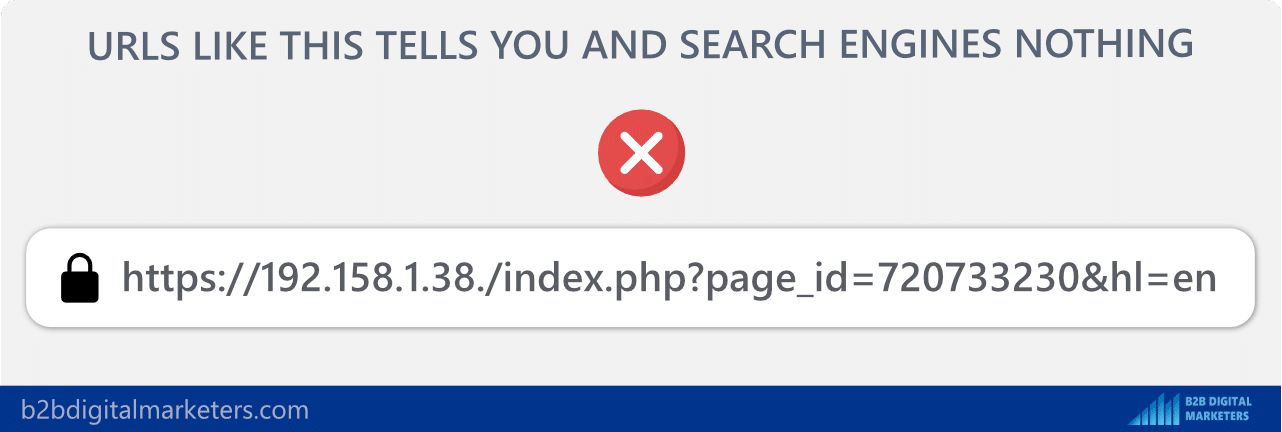
However, if you would see a page with a proper SEO URL, you could easily understand what’s the page about and where you are. For example, in this picture, you can see the URL and you can easily understand that the page is about link building services by looking at the category path and the slug.
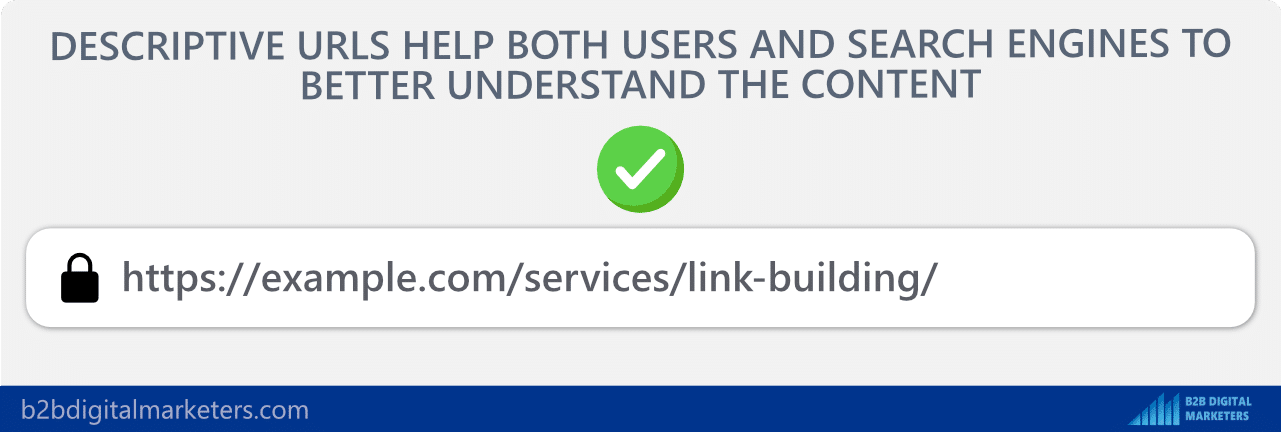
And you don’t need to read the page content to understand it.
Reason #2: It’s a Ranking Factor
The second reason is that URLs are a ranking factor in numerous ways.
First of all, Google uses URLs as a tiny factor when assessing your website for ranking.
Second, URLs are used by search engines to better understand what’s your content about before it is indexed. Therefore, using undescriptive URLs can make it difficult for search engines to properly index your content, which can lead to poor performance in search.
And thirdly, URLs should stay constant and not be changing. Every time you change a URL, it’s basically considered a new page by crawlers, and it can take time for the page to regain its ranking back.
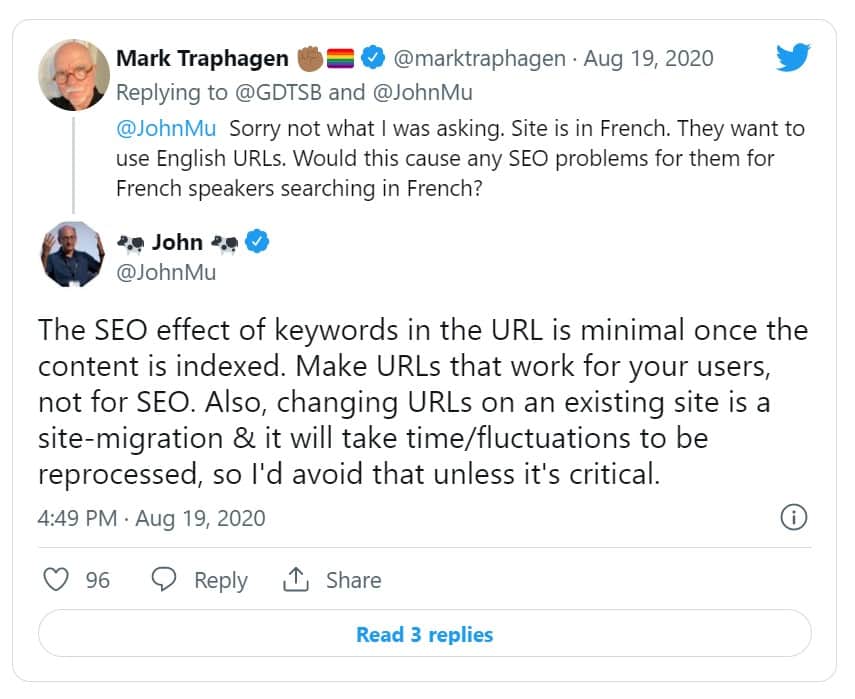
Thus, you should always make your URLs as evergreen as possible. However, on this later.
Reason #3: It’s more Click Worthy
And the last reason why URLs are important for SEO is that nicely written URLs not only tell users more about the page and its content without visiting the web page, but also it looks less spammy.
For example, would you click on this link if you would see it on social media? I don’t think so, you would think it would hack your computer and expose all your browse history, even the deleted one and you don’t want that to happen.
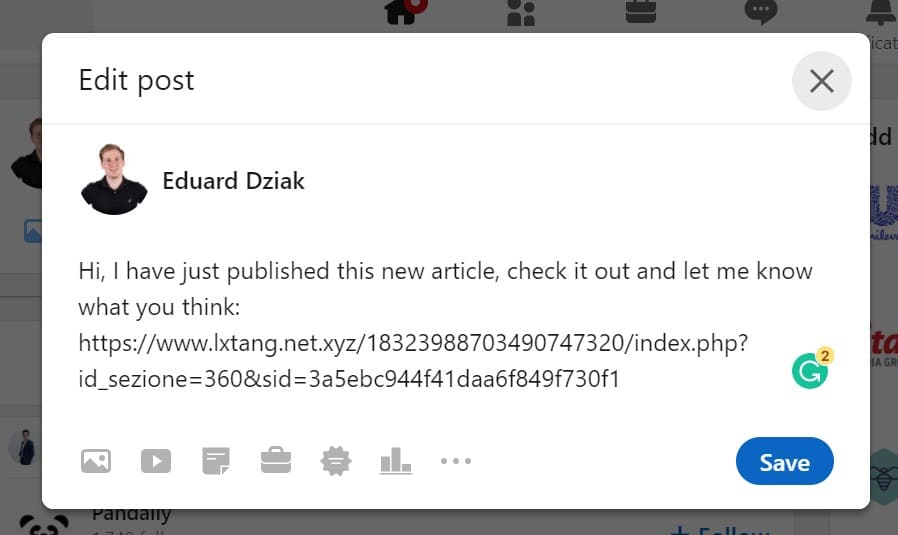
However, you would feel a lot safer if you would see a link like this, whether it is on social media, forums, or anywhere else.

And this influences the click performance of your shared URLs, which is also a ranking factor. Links that brought a lot of referral traffic can be used by Google when assessing your website for ranking as the study showed by CognitiveSEO.
With that, I want to conclude, your URLs are important for SEO, and you should create SEO-Friendly URLs for your website.
So let’s have a look at the SEO URL best practices to do that:
SEO URL Best Practice
Practice #1: Keep Your URLs Short & Easy to Read
The first SEO URL best practice is to keep your URLs short and easy to read so your users and search engines can easily understand them.
For example, URLs like this are difficult to read and understand what’s the purpose, you might get a word or two, but you will not be able to figure out what’s going on.
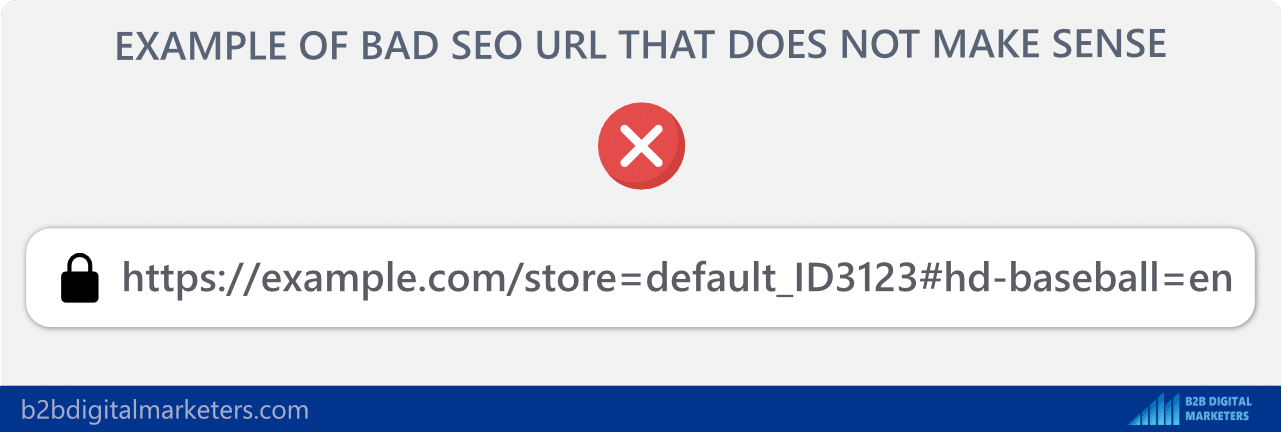
Also, even if your URL makes sense, it should not be a sentence where people need to read it to understand it.
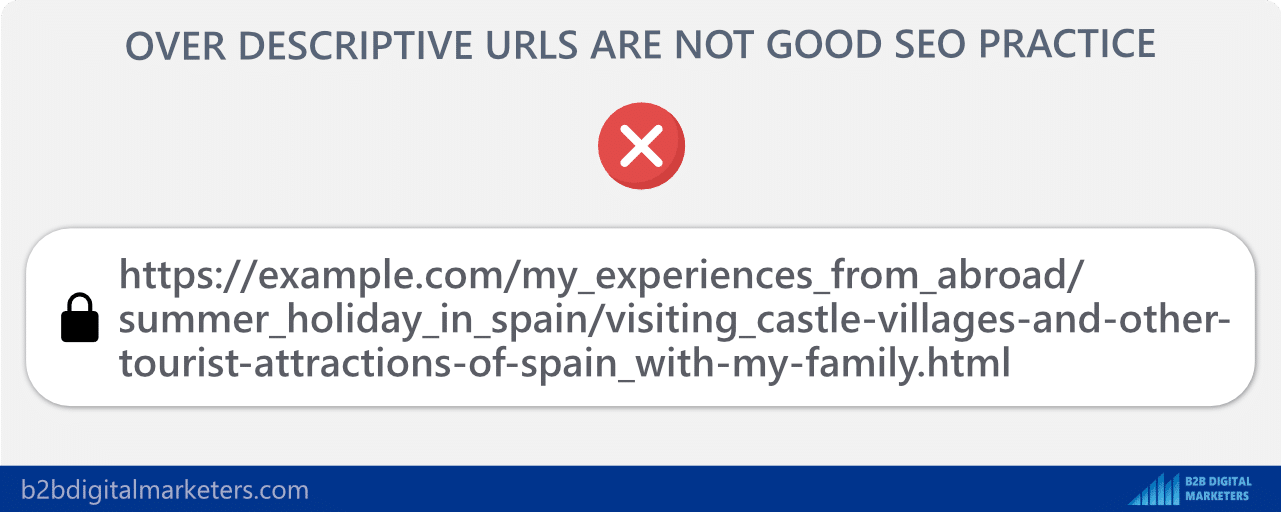
All these are not ideal for SEO and user experience URLs. Your URLs should be short, straight to the point, containing only the most important information, so users can only glance and right away understand it.
And search engines can get only important pieces of information that they need to know when they are indexing your content. Remember, simple URLs convey content information much better.

And as stated by Google, any other overly complex URLs can cause a problem for crawlers to index your website. Therefore, whenever you are creating a web page or blog post, make sure you are shortening your URL.

Lastly, Backlinko did a study where they found shorter URLs tend to outrank long URLs.
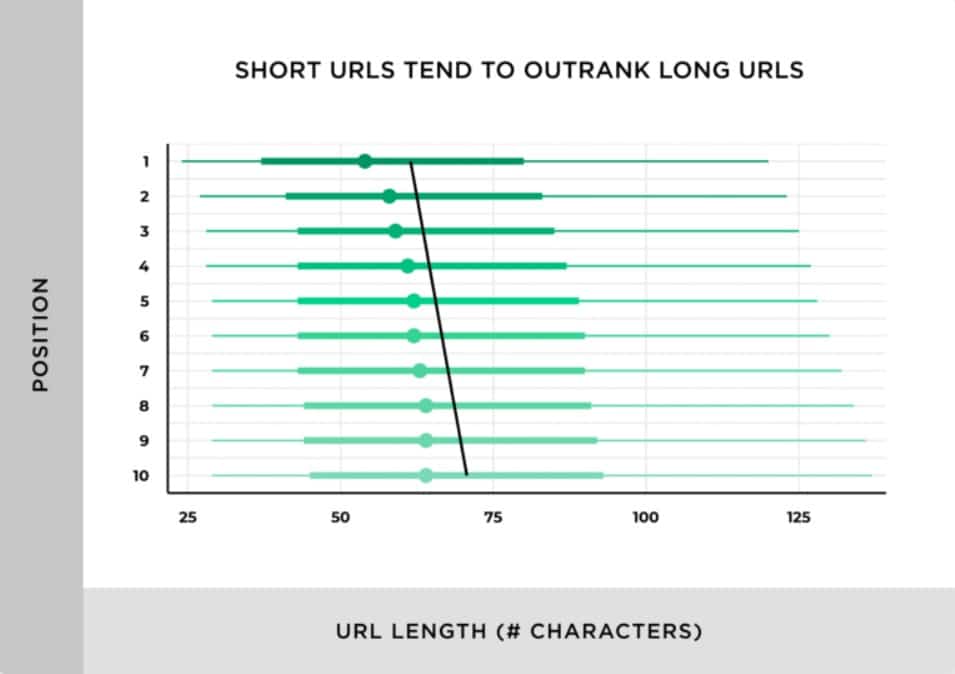
Practice #2: Use Descriptive URLs
The next second best practice for SEO URLs is to use descriptive URLs.
Using descriptive URLs has several benefits:
- Search engines can better understand and rank your content, especially if you include important keywords.
- They are helpful to users, so they can understand the location and purpose of the page.
- Descriptive URLs are also better for social shares and sharing with friends as they can easily understand the topic and generally descriptive URLs look less spammy.
- Descriptive URLs can be cached using the GET method, while query parameters prevent caching.
For example, if you look at this URL, you can easily figure out what’s the topic and if you share it with friends who are interested in this topic, they will most likely open it without thinking twice if that’s spam.
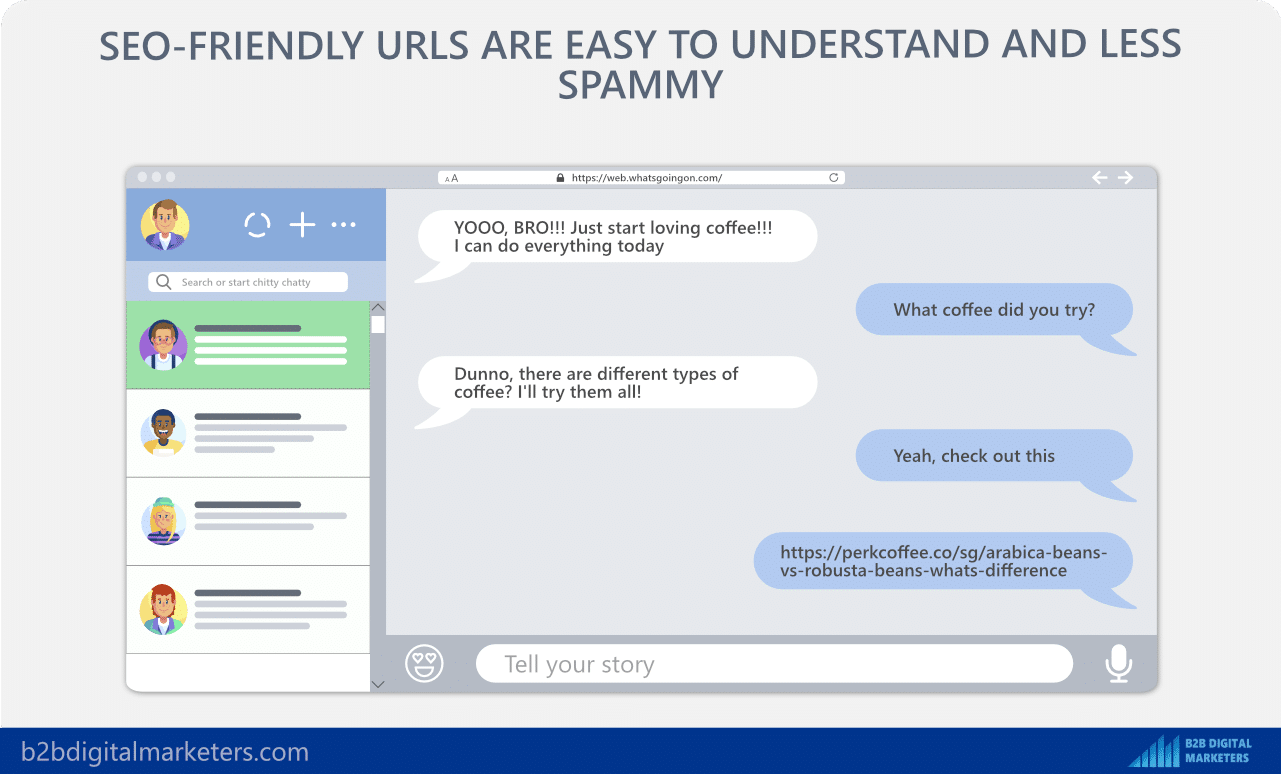
Also, search engines can pick up the important keywords from this URL and use them when indexing your website, so you can rank for the right keyword from the beginning.
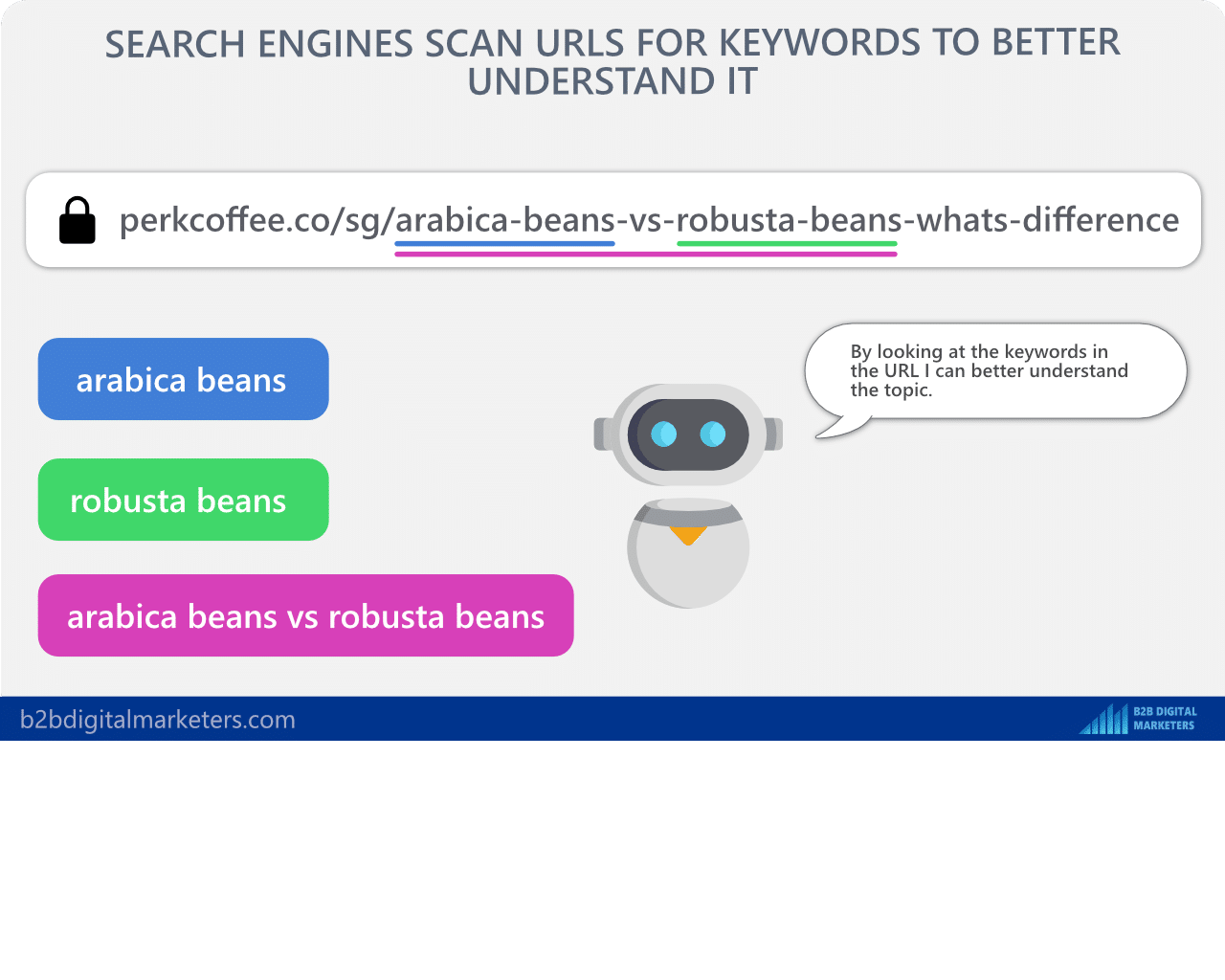
Descriptive URLs are the basics of SEO-friendly URLs and you should always use them. However, there are more rules about how you should use the descriptive URLs, so let’s move on.
Practice #3: Separate Words with Hyphens
The third best practice for SEO URLs is to separate words using only hyphens and not underscores as is recommended by Google.

Using hyphens in URLs is easier to read and more user-friendly. Also, Google is treating hyphens/dashes as a separator, while underscores are not.
And, if you are already having pages with underscores, it’s recommended to not change them as Google doesn’t really care about underscores vs dashes in URLs according to John Mueller.
However, as recommended by Google, you should create URLs with hyphens preferably. If you are using WordPress, luckily this is done automatically for every web page and blog post.
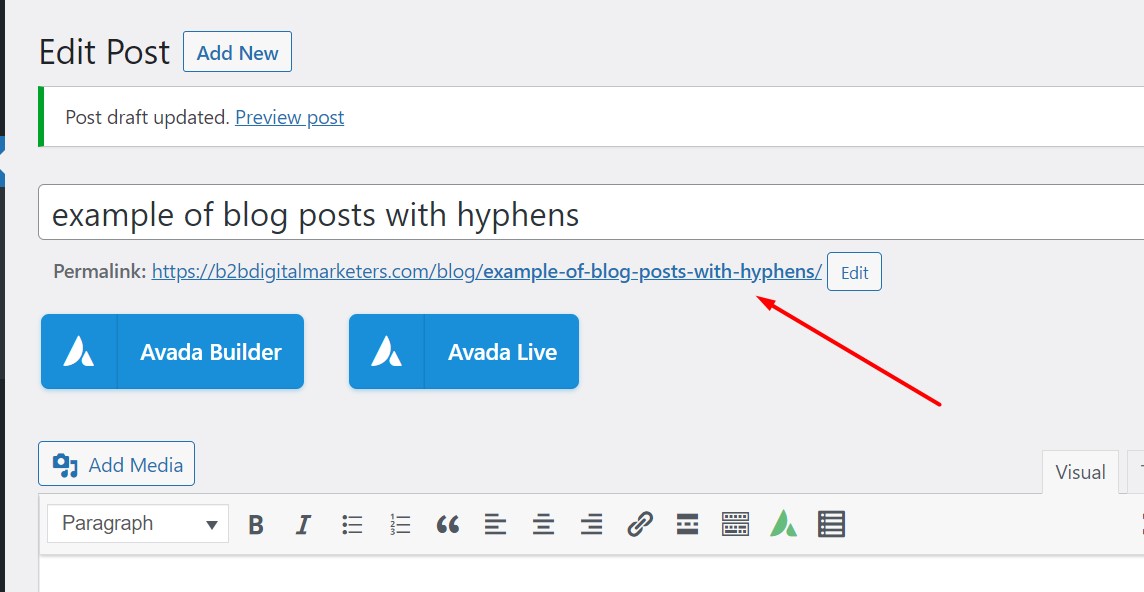
Practice #4: Use Only Lowercase in URLs
The fourth best practice for SEO-friendly URL is to use only lowercase to keep consistency to avoid having problems with 404 pages.
As stated in HTML and URLs document:
URLs in general are case-sensitive (with the exception of machine names). There may be URLs, or parts of URLs, where the case doesn’t matter, but identifying these may not be easy. Users should always consider that URLs are case-sensitive.
This means that you can be using uppercases in your URLs, but it should be standardized across all your website.
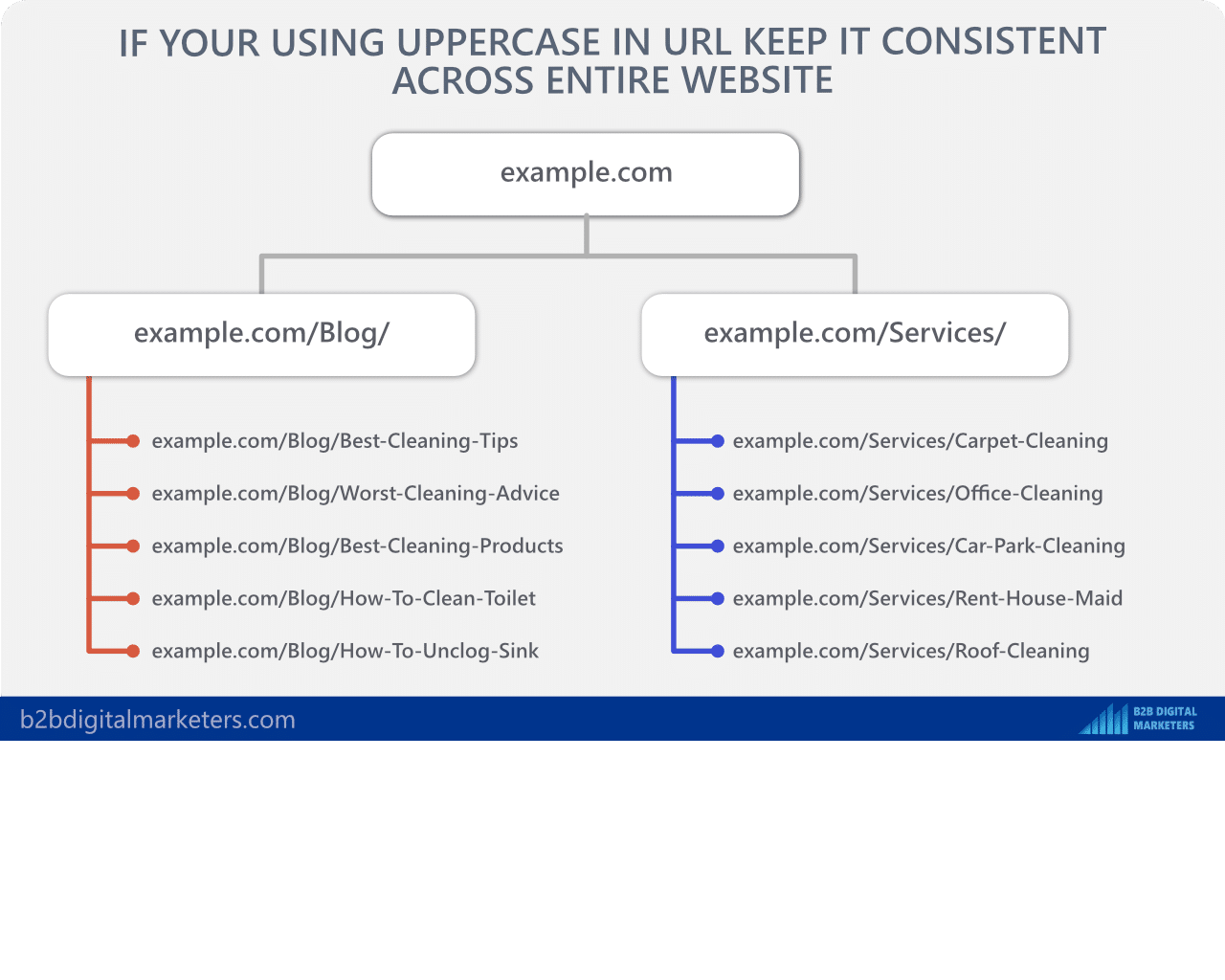
That’s also approved by John Mueller as well in his response.
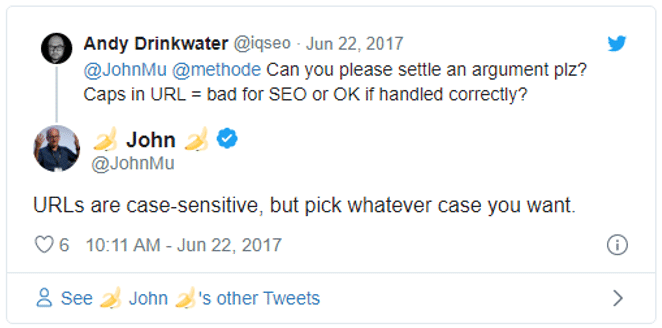
However, the problem is that most of the users are already used to using only lowercases in URLs across the internet, therefore this could cause a lot of trouble for users searching for URLs on your website.
Not only that, but social media are case sensitive as well. If somebody would share your URL using only lowercases, that would be treated as a different URL.
That’s why using only lowercase in URL is a safer and recommended way to ensure you avoid any SEO troubles with a ranking of your pages, 404 errors, and duplicated content.
If you are already having pages with uppercases, I would recommend you to 301 redirect all of them to pages with lowercases and create it as a canonical URL, so search engines know which page is the original.

Practice #5: Include Only Primary Keyword
Another important practice for SEO-friendly URL is to include only a primary keyword in your URL and nothing else.
Primary keywords are the main keywords you want to target with your blog posts and pages. It’s essentially the main version of all the secondary keywords often with the highest search volume.
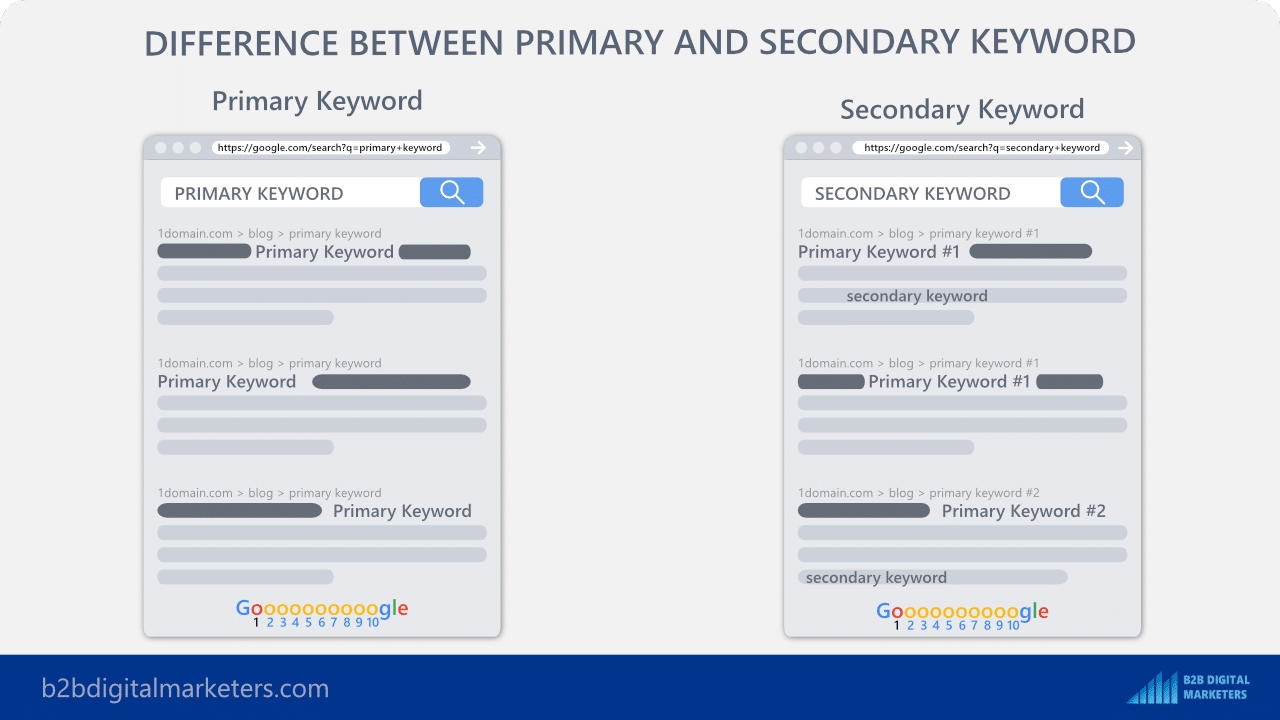
And as said, by Google, keywords in URL are very small ranking factors after it is indexed and it’s not worth restructuring your website.
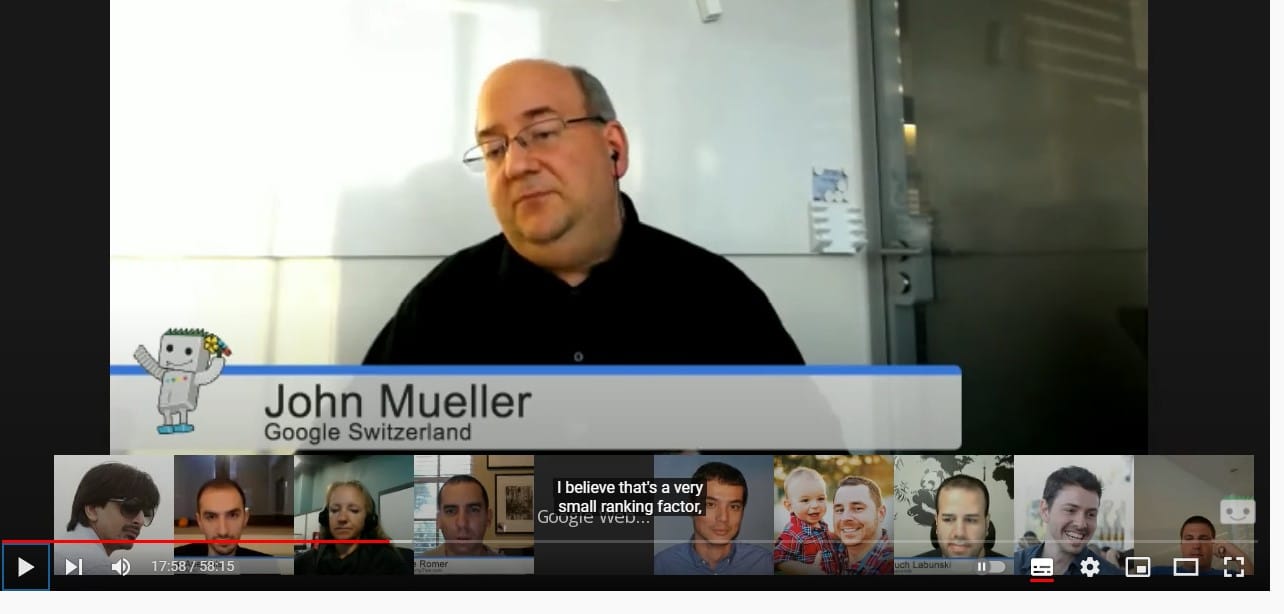
But it’s also a big part for crawlers and search engines to better understand what’s your page about.
And when you look at Google’s website pages, you can see they are using primary keywords they want to rank for in their URL as well.
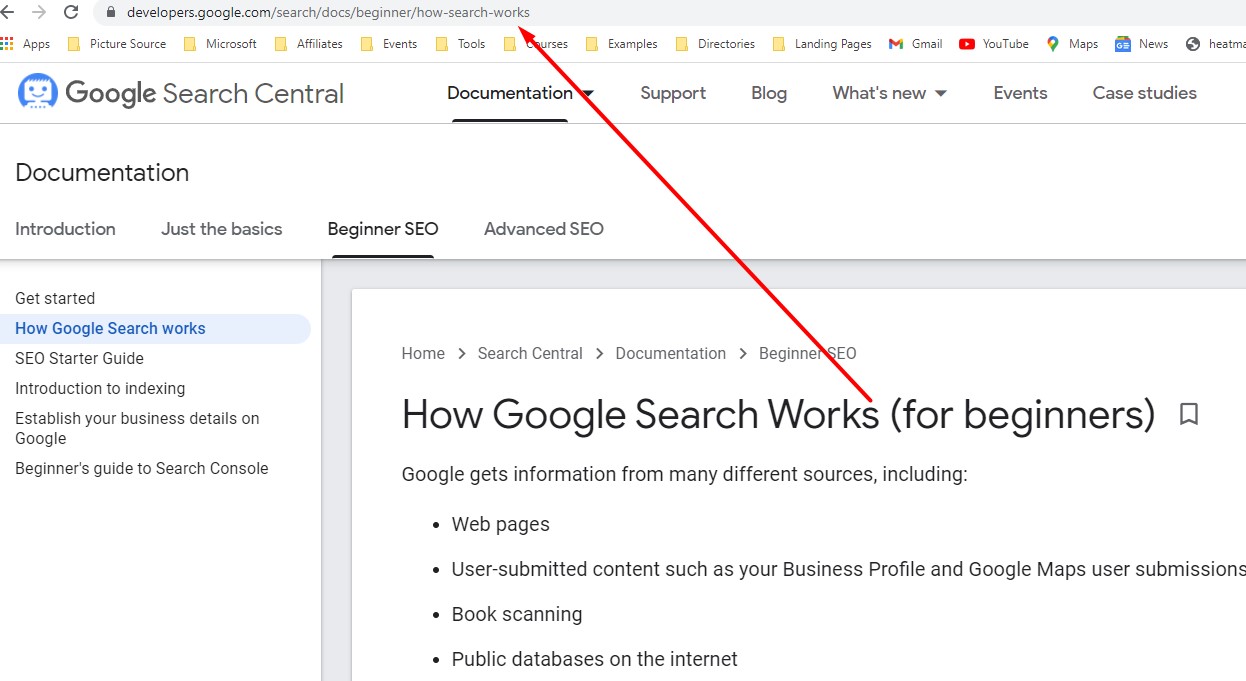
Therefore, using primary keywords in URL is considered one of the important on-page SEO techniques.
And, regardless of if it is a huge or small ranking factor, it’s also easy to include your primary keyword in your URL.
For example, if you look at any of my articles, you can clearly see what keyword I am targeting as I am only including the primary keyword in the URL.

And that same also applies to your product, service, and solution pages.
For example, SAGE is targeting a discrete manufacturing industry to attract potential customers. So, they included their primary/target industry keyword in the URL to make it easy for search engines and users to understand what’s the page about.
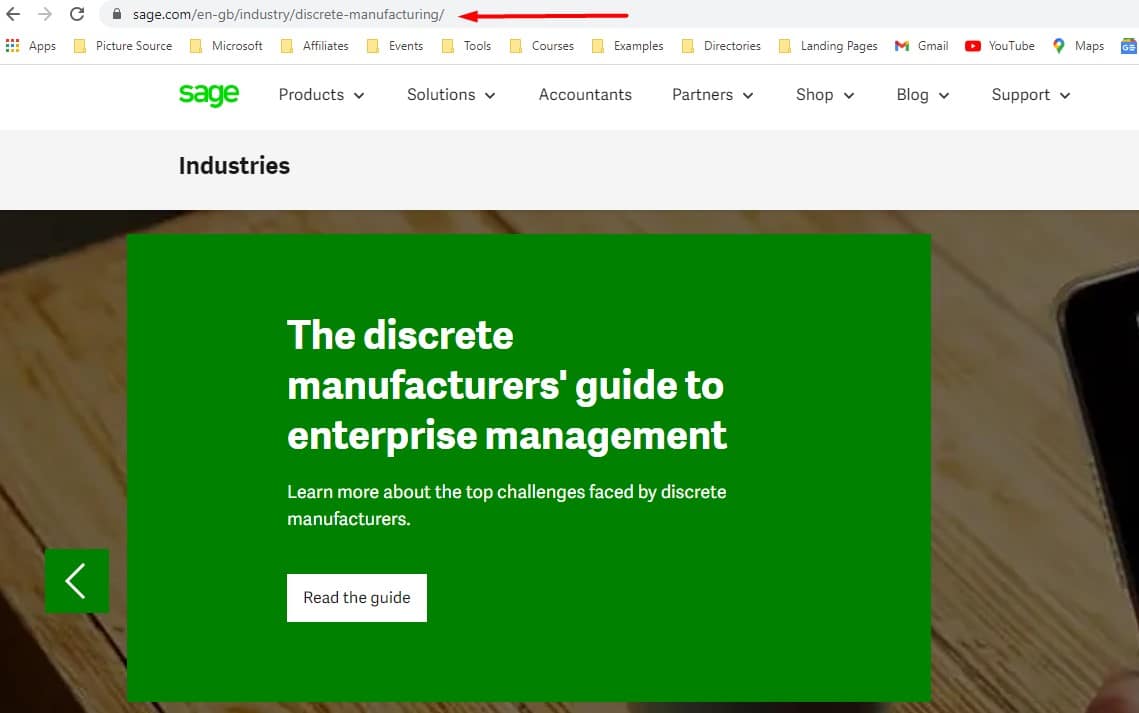
Or another example could be WebFx, and its URL structure using primary keywords. If you look at their service pages, each of the pages has only the primary keyword as well.
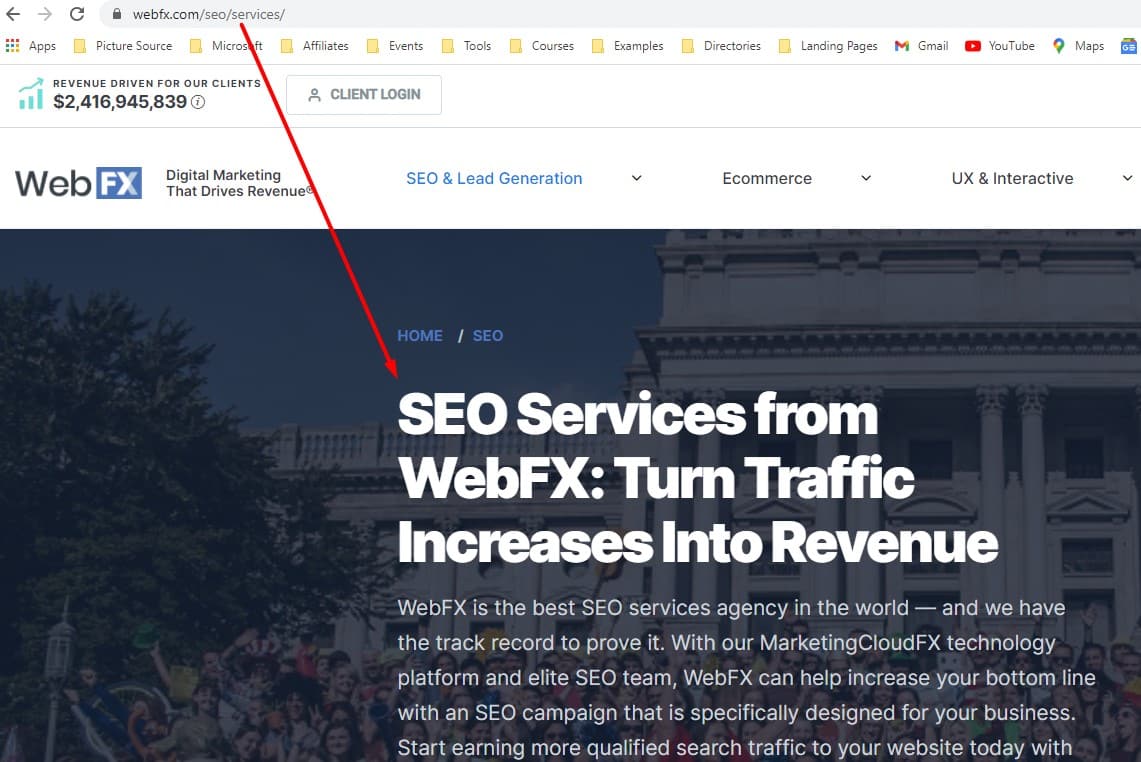
And there are countless more examples I could show you. However, the point is, if you want to compete for the first page of Google, even tiny factors like this can make difference and you should try to always fully optimize your page for on-page SEO, especially when it’s easy like including primary keywords in URL.
Practice #6: Avoid Keyword Repetition
Another important SEO URL practice is to avoid unnecessarily keyword repetition.
Especially if you are creating categories, sections, and subsections for your website, you might come to a problem where you want to target a primary keyword in specific word order but your URL might make it difficult.
For example, if you have created your category page for all your services, then you don’t want to repeat the word services in your slug anymore.

Even though, the exact keyword “seo services” gets way more search volume than the exact keyword “services seo”.

It doesn’t matter in what order is your keyword in your URL. Search engines are smart enough to understand and rank you for the primary keyword with the highest search volume and you won’t be at disadvantage compared to those who repeat the keyword in the URL, as long as you have the exact keyword you want to target in your page displayed in headings, pictures, content, etc.
Actually, quite otherwise, search engines can see keyword repetition as a manipulative tactic to improve ranking, which can put you in danger, especially if you do it for more of your web pages.
So, don’t worry about exact match keywords if you cannot, and don’t repeat stuff in your URLs it does not make difference, worst it can potentially hurt you.
Practice #7: Avoid Numbers in URL Unless Important
The next best practice for SEO URLs is to avoid numbers in your URL unless they are important.
Using numbers in URL is generally a bad idea because it can cause difficulties in the future when you want to update your articles or web pages or change them to meet the search intent. All this can cause a lot of 404 errors or you will need to do a lot of 301 redirects.
For example, an old practice of using a published date in your URL is really a bad idea like WordStream is using for all their articles such as in this excellent article on headlines examples:
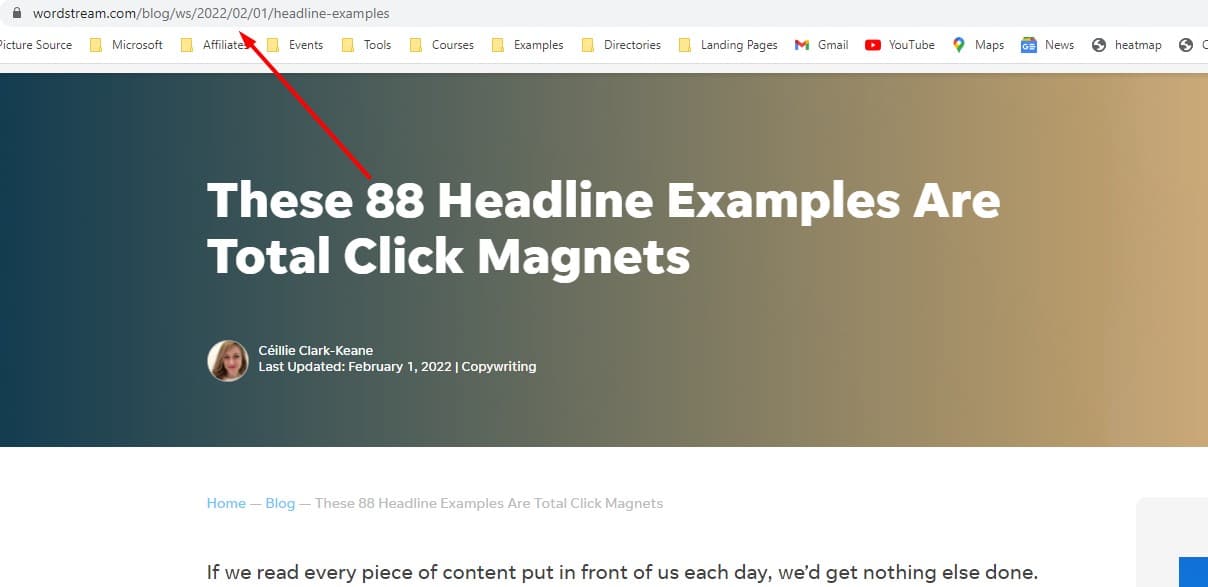
Because later if you want to update your article, you will have two choices, both of that are not ideal for SEO:
- Republish the Article: You will have to delete the old article and republish it with a new URL, which means you will have to do redirects which can cause you potentially lose ranking and some of the backlinks.
- Update the Old Article: Or you will keep the article with the old URL and the old date and just update the article. However, a lot of users will see the date and find it outdated and they can leave, which can send a negative signal to Google about your page and causes you to lose ranking.
However, if you would have only the primary keyword in the URL which in this example is “headlines examples”, you can easily update the article without changing URLs and doing 301 redirects or showing your users it’s an old article that has been updated. It will look like it’s freshly sent from the printer.
Another example of using numbers in your URLs you want to avoid is using the number of strategies, techniques, reasons, products, best practices, etc.
For example, as you can see in the URL of the article, they included a number of reasons why a digital marketing strategy is important.
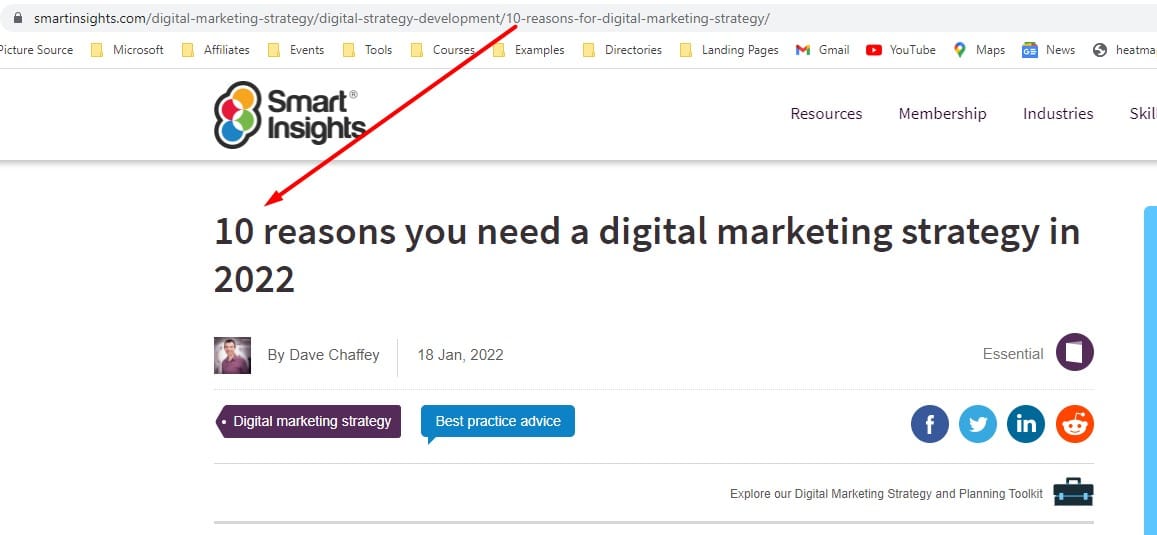
And again, if you want to update your article and add an extra reason or delete one reason, then you will need to republish your article, which can cause more problems.
And this applies whether you are using actual numbers or writing numbers in your URL.
Therefore, using numbers in URL is generally a bad idea, unless it’s important. Such as the date.
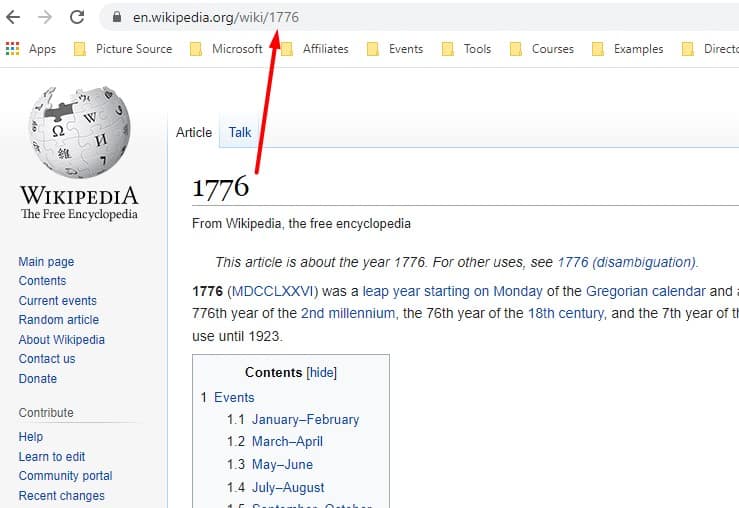
Or the number is a name such as a film 1917 released in 2019.
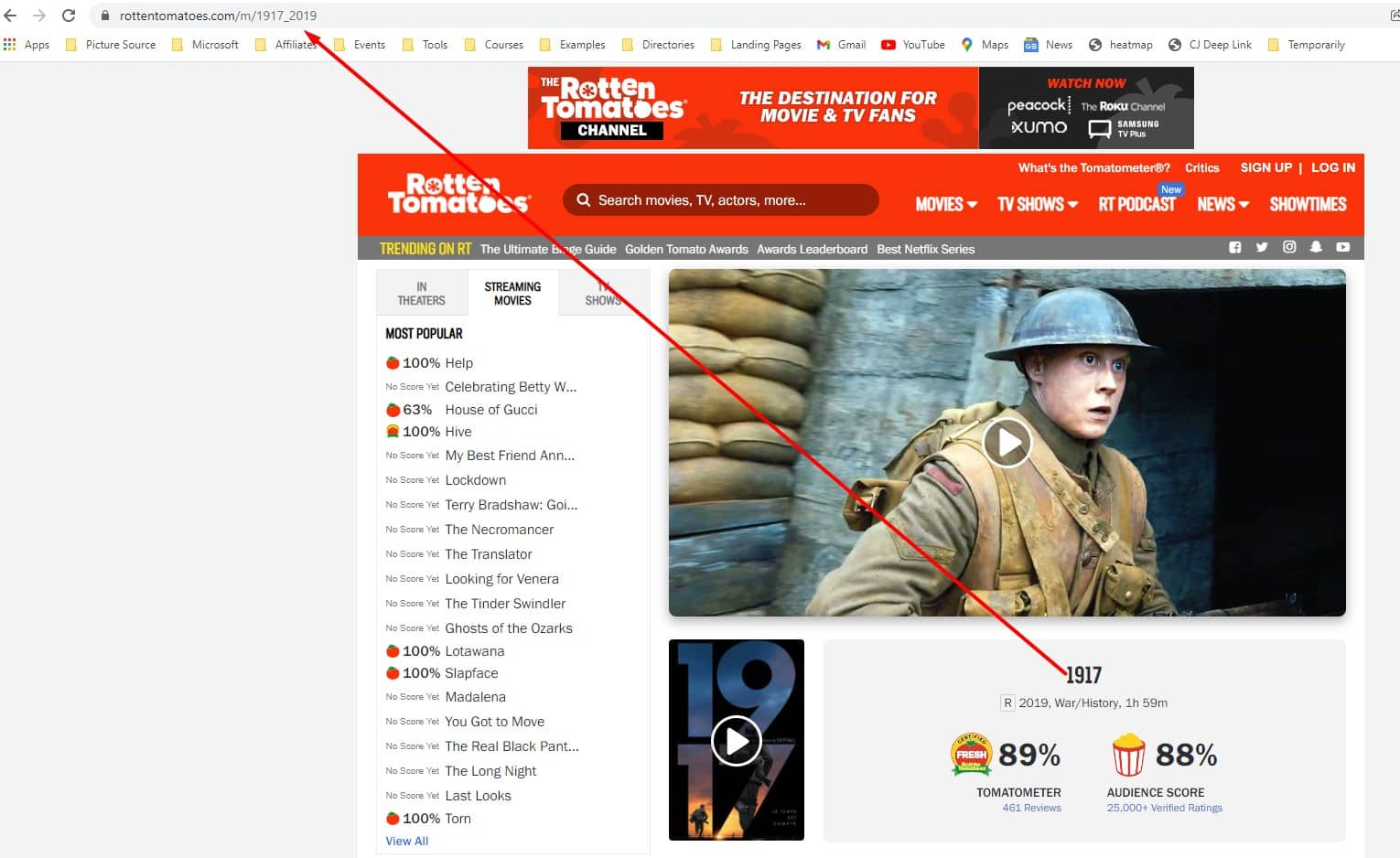
Or the marketing rule of 7 is a good example of when a number should be used in the URL.
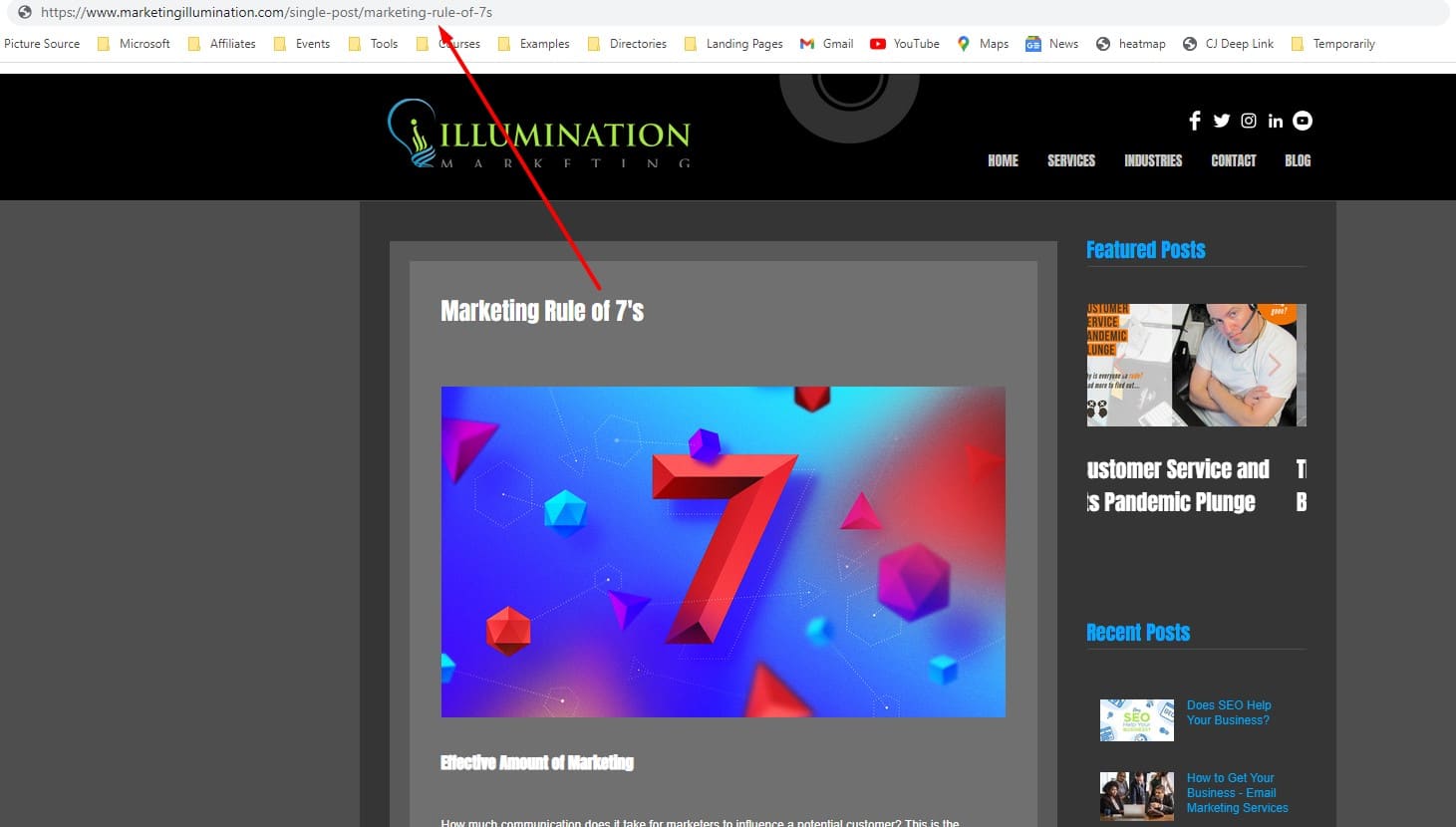
With that, try to avoid using numbers in URL, unless it’s important information or a name that should be included within.
Practice #8: Remove Unneeded Information
Another URL SEO best practice is to remove any unneeded or superfluous information from your URLs.
For example, as you can see on this web page they are targeting the main keyword “sales strategies”, however, the word “effective” is considered as a keyword modifier and in the URL is redundant and can limit your reach.

Because most of the users will be searching for the keyword “sales strategies” and add their own keyword modifier like “best”, “quick”, “for +something”, “effective”, etc.
And this can limit your reach. For example, Google can think your goal is to rank for the keyword “effective sales strategies” while the keyword “sales strategies” is not as important for you, which has a way smaller search volume.

Another example could be this web page. As you can see, they are targeting the keyword “sales strategies” as well. However, then there is the additional information by “revealed-sales-experts” which would be perfectly fine in the title to increase CTR (check out CTR Manipulation), but not in the URL.

Again, this does not serve any purpose and it does not need to be there. Thus, I would recommend you delete this from the URL and use it only for your title.
And the last example is this URL. As you can see, they are targeting the keyword “sales tactics” but then there is the second part “that work” that is absolutely useless there. Again, it’s good for titles, not for URLs for SEO purposes.

Also, there is one thing I want to teach you about keywords. Here you can see, they are targeting the keyword “sales tactics” which is essentially the same keyword as “sales strategies”. Therefore you cannot write two articles to target both keywords “seo strategies” and “seo tactics” as you would end up with keyword cannibalization.
So which keyword should you choose to target?
You always want to target the highest search volume keyword to maximize your SEO potential, which in this example is the keyword “seo strategies”.
On top of that, first, it also has lower keyword difficulty so it should be easier to rank for, and second, it has a higher CPC, which means it could be a more profitable keyword.

This is a common problem you will face during keyword research, so here is my tip. Always find the main primary keyword with the highest search volume and synonyms use as LSI keywords.
Practice #9: Organize Your Content into Categories & Subcategories
The ninth-best practice for SEO-friendly URL is to organize your content into categories and subcategories.
Website architecture is an important part of your SEO strategy, and you should spend some time planning how you are going to organize your content on the website.

Organizing your content into categories and subcategories helps in several ways:
- It helps search engines better understand your content and the relationship between the pages.
- It helps users to also better understand your content, the relationship between pages, and the location where they are.
- It helps search engines to better crawl your website and index all your pages.
- And, it helps your users to discover information faster they are looking for.
Website architecture is an essential part of your search engine optimization and organizing your content into categories and subcategories is displayed in the URL.
For example, if you are creating podcasts like Joe, then you want to categorize your content under podcasts, so search engines and users know, this is a podcast episode and not a blog post.
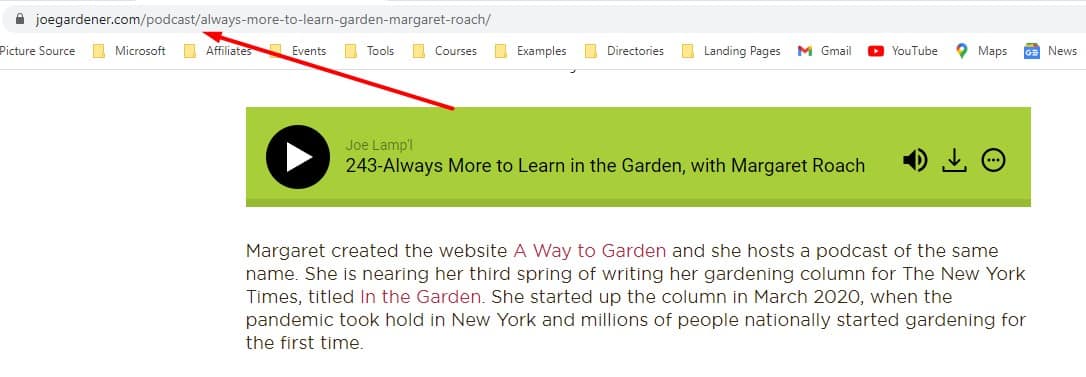
If you are selling your own products or collection of products, then categorize it as well, so your users and search engines can understand that the pages under products are product pages.
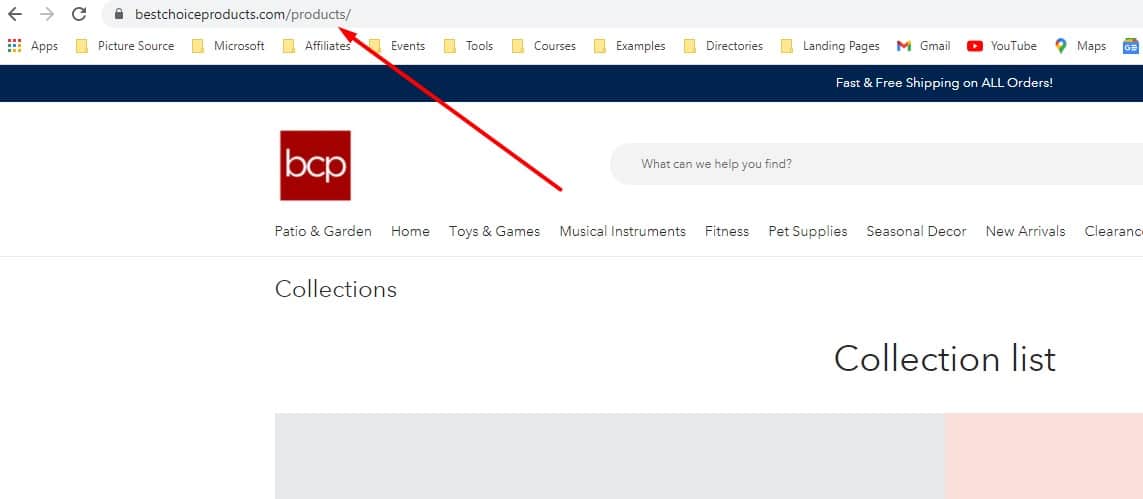
Or are you providing services and you want to drive leads from your website? Categorize your service pages. Do it even if you provide only one service.
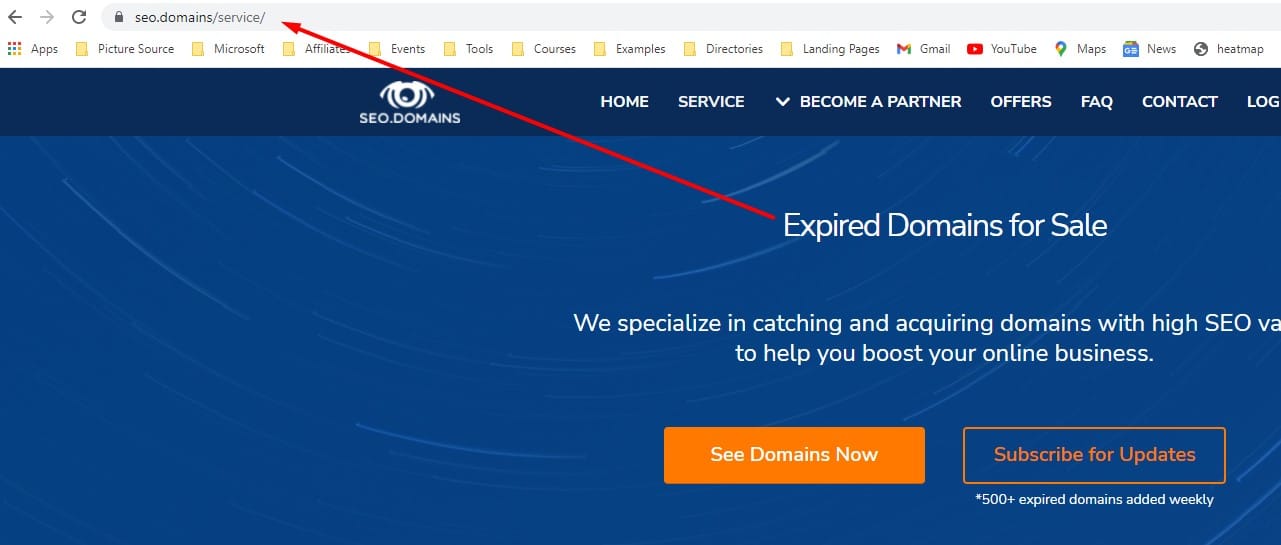
Or are you writing articles, news, or getting press releases? Then you want to also categorize them as well.
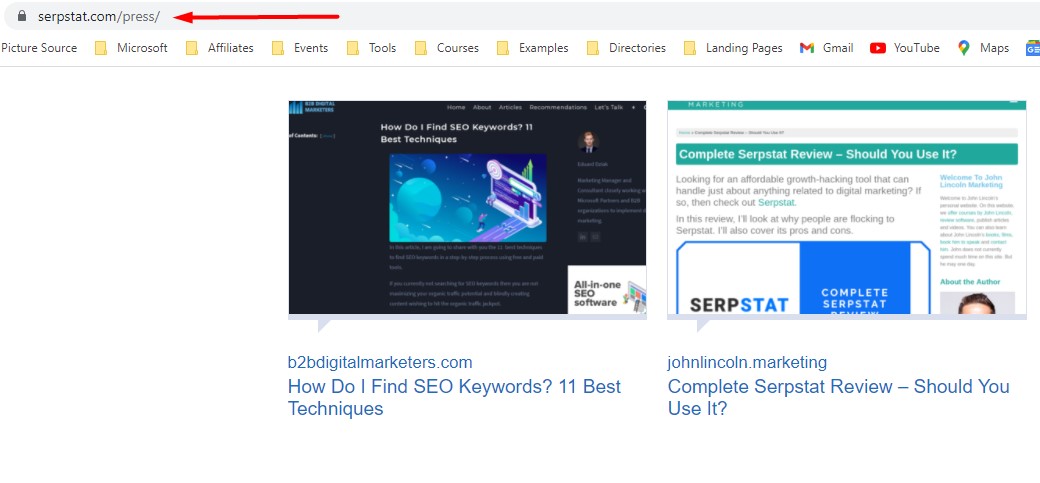
Every content on your website should be categorized. Of course, there are tons of different ways how to categorize your product, services, and category pages and it can be different for e-commerce, content, or lead generation site.
However, it’s extremely important to do that as it helps search engines and users to navigate across your website and find information and you should create logical website architecture on your website.
Practice #10: Avoid Blog Posts Titles
Another big mistake I am seeing quite often website owners, bloggers, and even SEOs are doing is to have blog posts titles as a URL.
Whenever you are publishing a new blog post or page, WordPress automatically takes the Title and converts it into a URL slug.
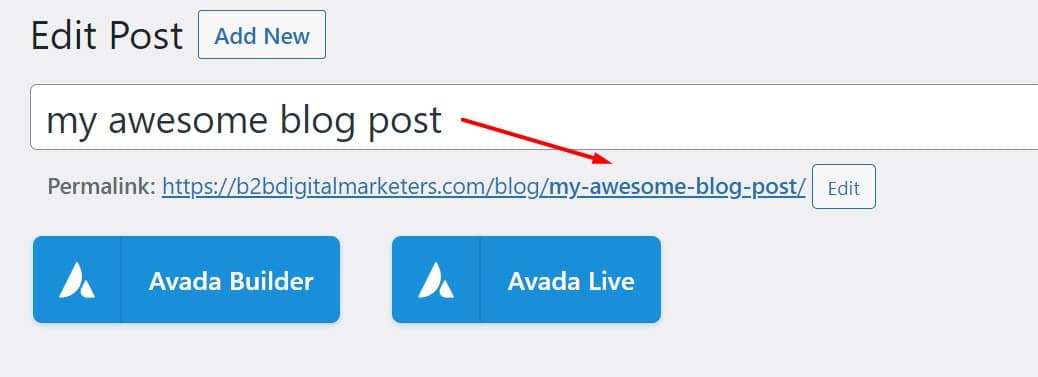
And I am seeing this SEO mistake across all kinds of websites, niches, and industries, whether it is gaming,
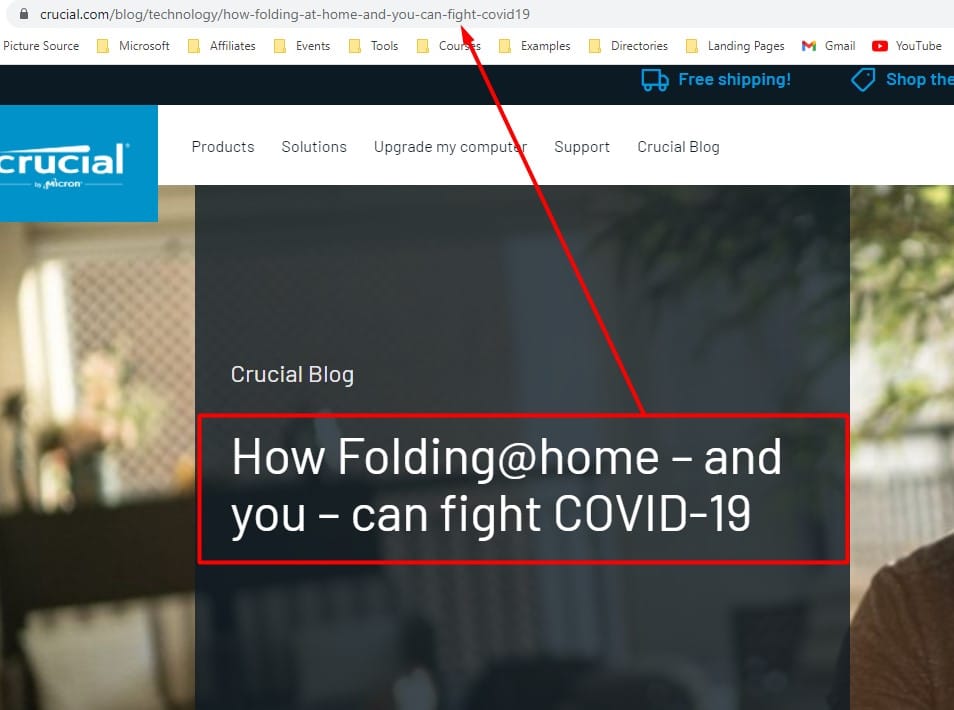
Or even in the SEO industry.

So, as I said, you should avoid using blog posts titles as your URL and edit it to use only primary keywords because as I already mentioned, what if you want to edit your article due to search intent change or just do historical optimization?
Again, it would be really difficult, and you would face a lot of problems.
Practice #11: Fix All 404 URLs Redirects
The next SEO URL best practice is to fix all 404 errors on your website.
There are numerous HTTP status codes that can have a negative impact on your SEO and the URL 404 error is one of the most serious and easiest to fix.
404 error status code means the page is not found. This could happen because you changed the URL of one of your web pages or deleted your page and you didn’t update your internal linking.
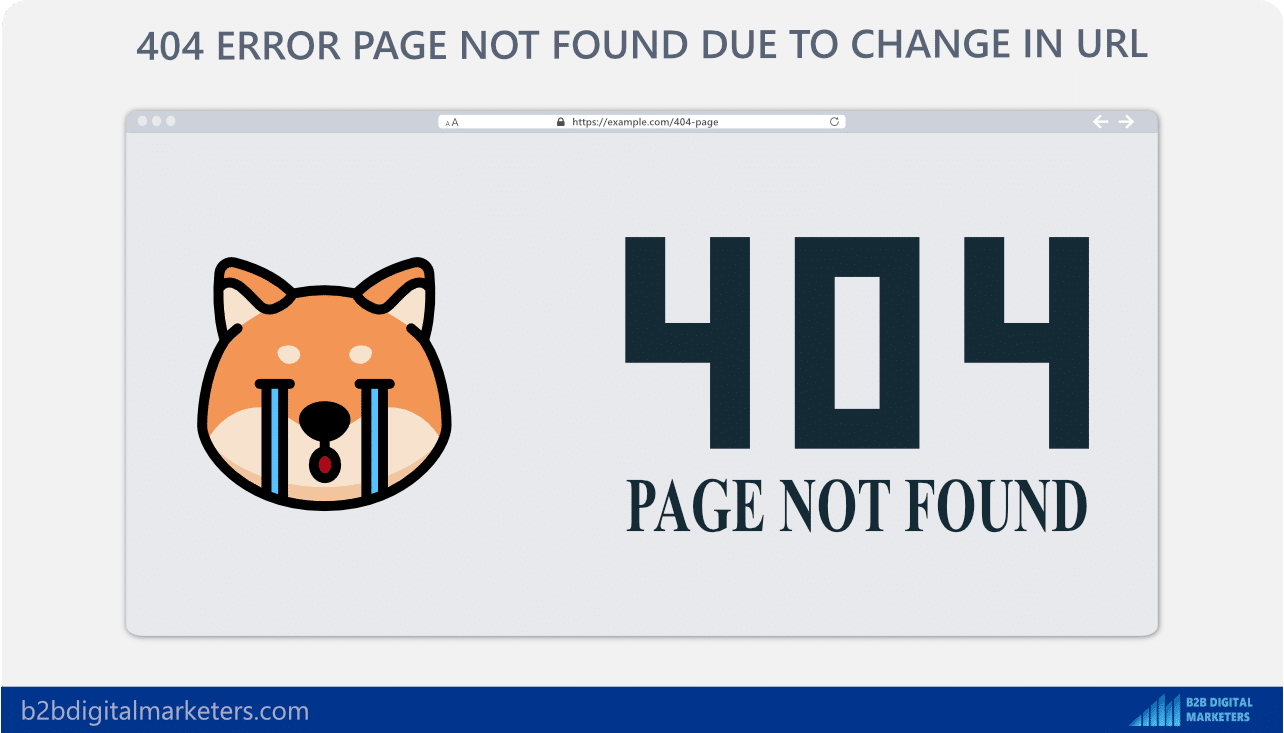
In most cases, every time you change a URL or delete a page, you will want to redirect it to a similar or another appropriate page.
The reasons why are because:
- If your web page or blog post generated backlinks, then you would be losing that link juice and even the backlinks which can cause a decrease in the overall ranking.
- 404 pages have an almost 100% bounce rate, which negatively affects your user experience and engagement metrics, which again can negatively affect your ranking.
- Traffic that visits the 404 page will most likely never be returned.
- 404 pages can actually rank as well, which again can negatively affect your overall ranking.
So, to find out if you have any problem with 404 URLs, you can use any website site audit tool. For me, I am using SE Ranking Website Audit tool.
SE Ranking Website Audit tool analyzes every web page against 120 parameters that impact SEO and gives you a detailed report about your website and its health.
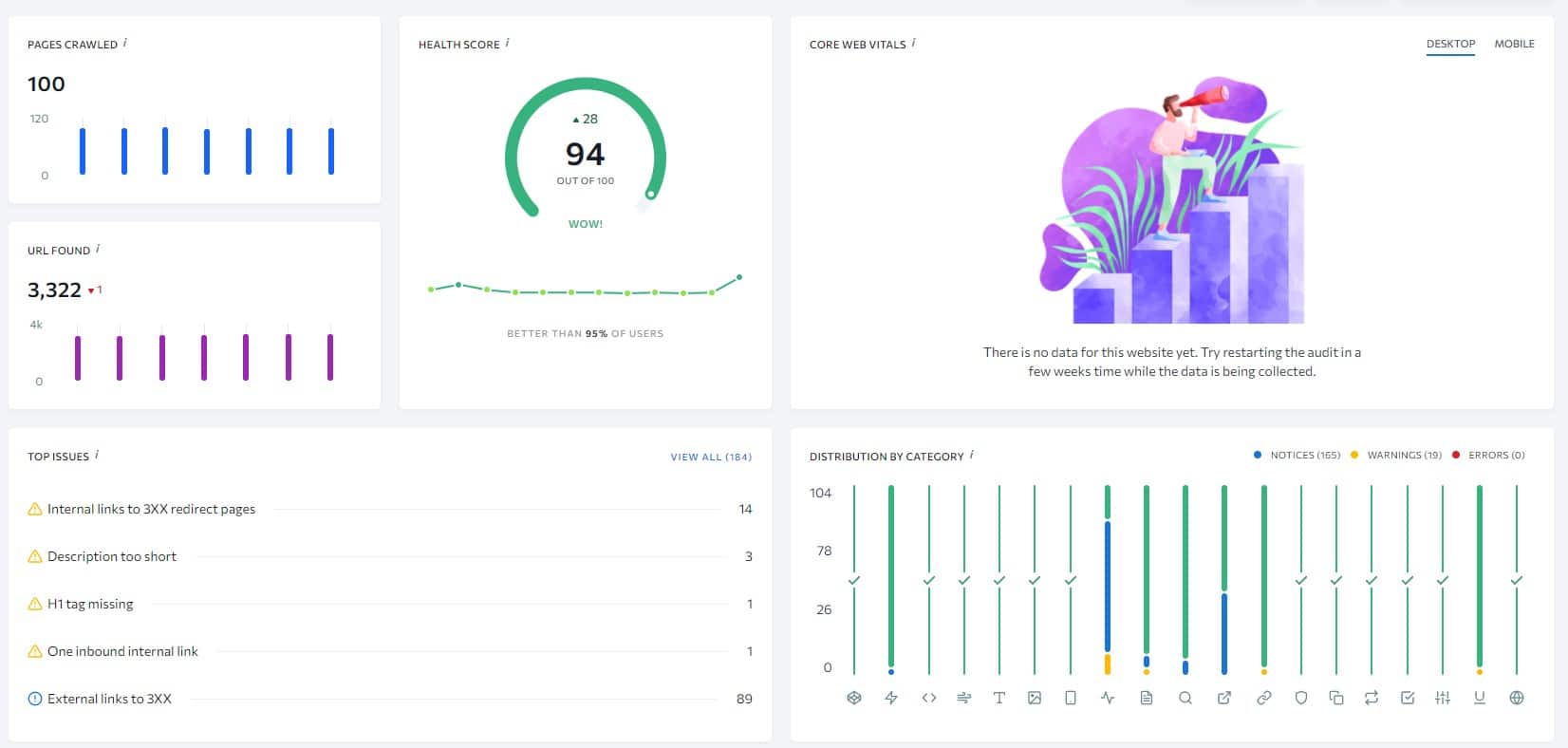
And it gives you a comprehensive report of all your HTTP status codes including 404. This makes it super easy to find and fix your URLs with 404 errors on your website.
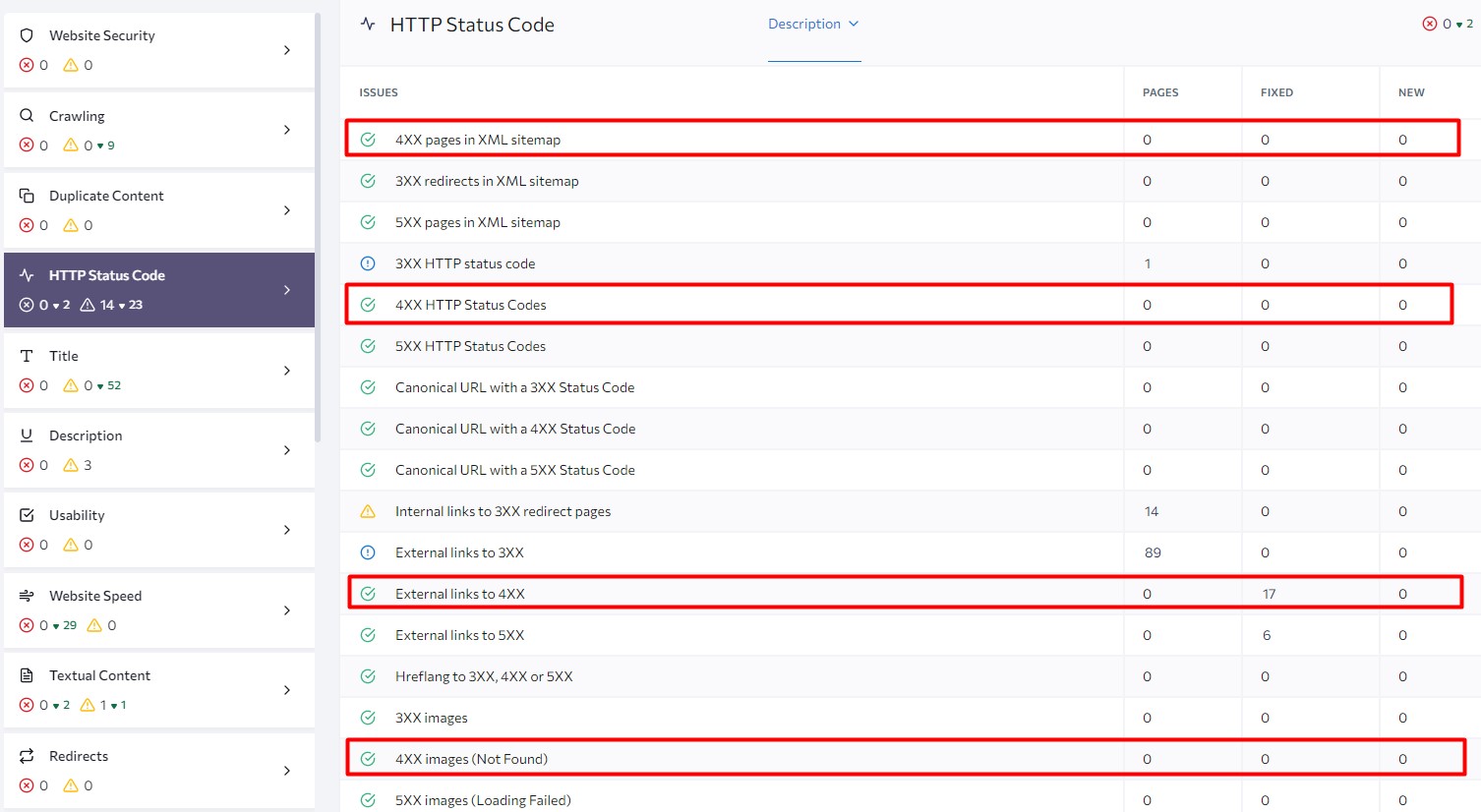
And once you find 404 errors on your website, then you can use an SEO plugin such as Rank Math and easily set up your redirects.

However, don’t worry about Google crawling old, deleted URLs and giving you a 404. It’s absolutely normal to have 404 pages in Google Search Console as your website progresses and you are deleting or updating content.
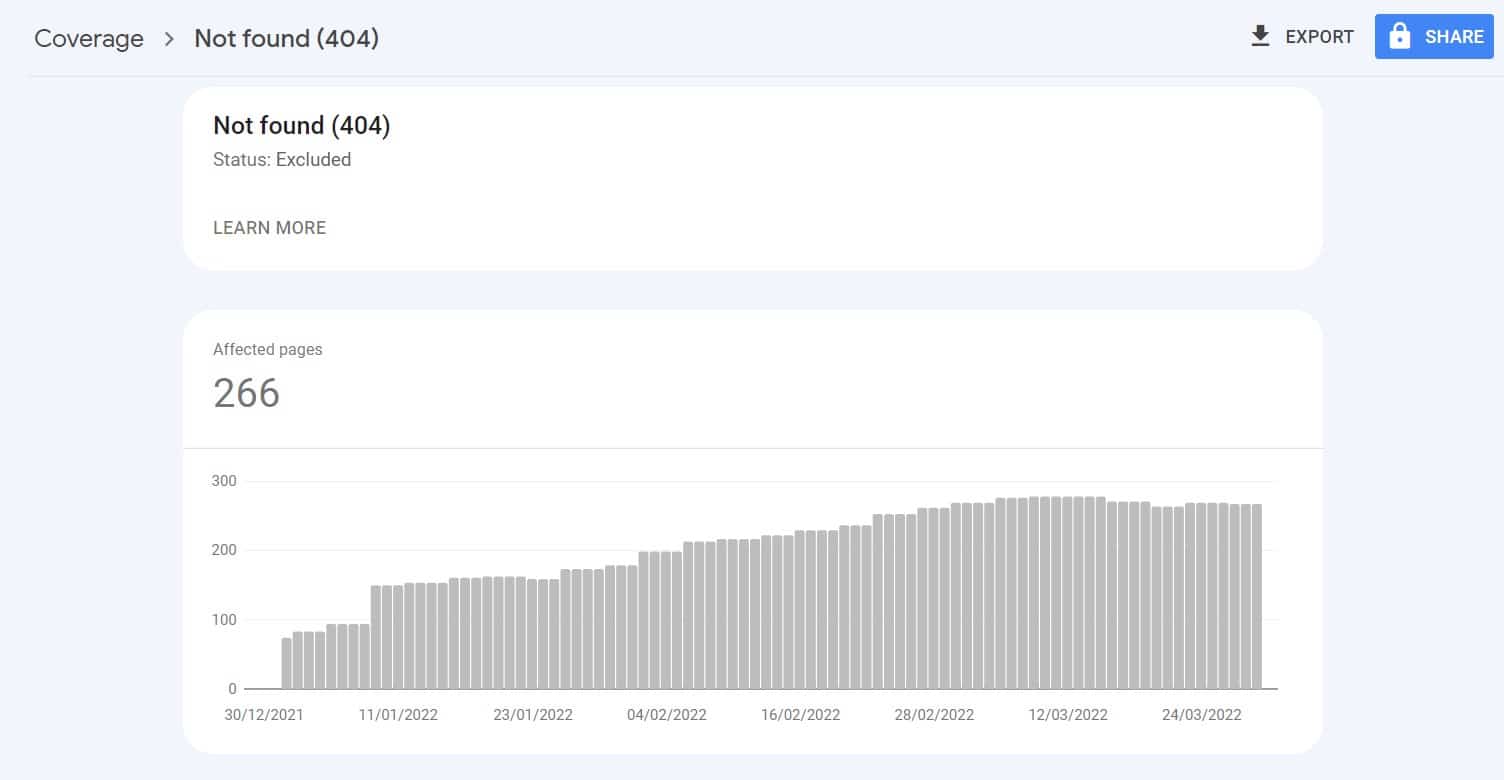
Practice #12: Keep URLs Redirection for a While
Another SEO URL practice I want to share with you, that is related to 404 errors and to overall technical SEO is to keep URLs redirection for a while and don’t delete them.
According to Google, you should keep your redirects for at least one year. You can watch this video to learn more:
However, it might be best to keep all your redirections for as long as you can and don’t delete any of your 301 redirects from years back.
As if you delete your old 301 redirects, your Google Search Console can show 404 crawl errors as they try to recrawl pages they saw in the past.
To learn more, you can also watch this video on how to deal with old 404 errors:
Practice #13: Use HTTPs Protocol
The next best SEO URL and technical SEO practice are to ensure you are using the HTTPs protocol in your URL on your website.
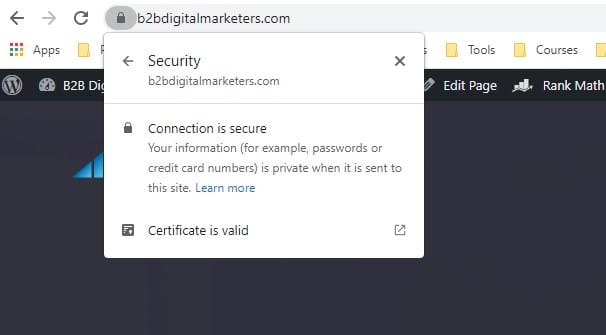
The difference between HTTP vs HTTPs is that HTTPs is a protected version of HTTP using a TLS (SSL) certificate to encrypt requests and responses between your website server and the browser of a user.
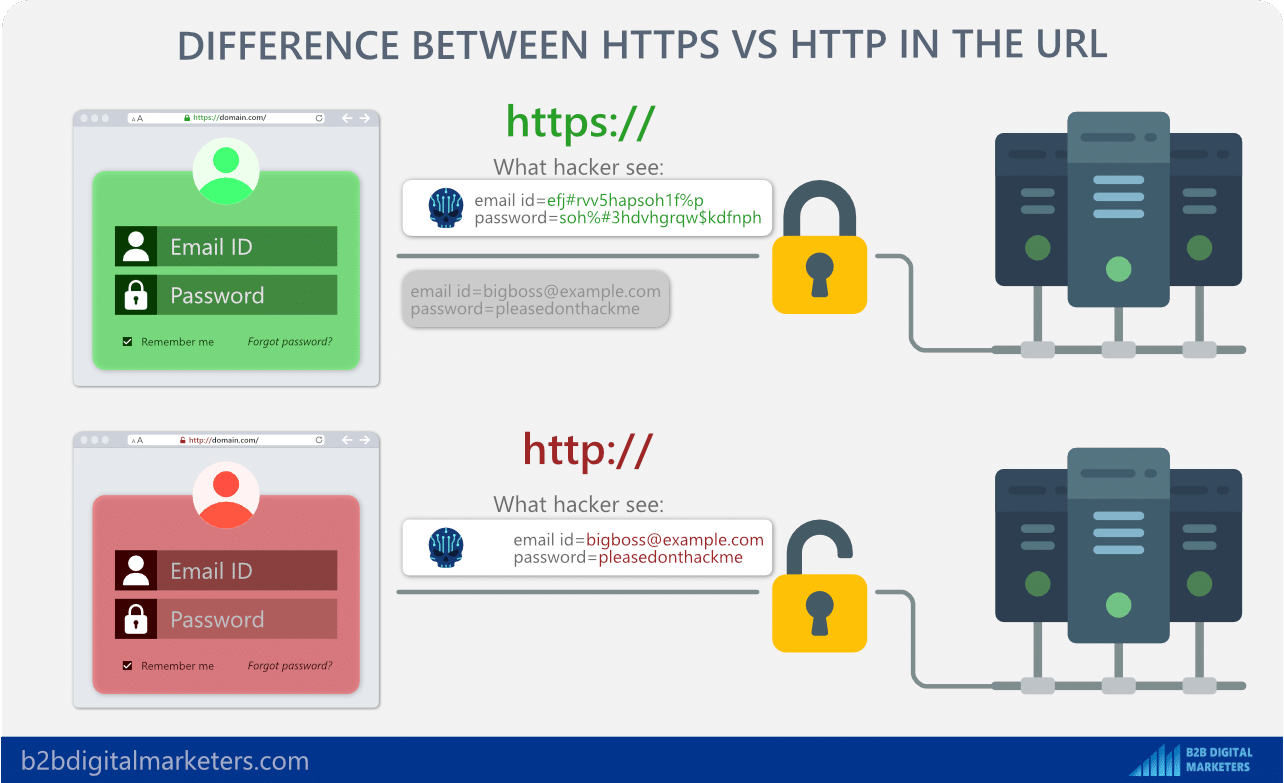
With that using HTTPs can bring several SEO benefits such as:
- It increases the security and privacy of your users.
- Google introduced HTTPs as a small ranking factor.
- Using HTTPs enables you to access the latest modern website technologies to increase page speed.
- HTTPs helps you to comply with some of the privacy regulations.
Now, if you have purchased any domain, most likely you got an SSL certificate with the domain to have the HTTPs version for like two years and then you can usually purchase an SSL certificate with your domain or hosting provider as well.
Also, some of the hosting providers like Ezoic gives free SSL certificate to all of their users. (Check out HostGator alternatives.)
If you don’t have one, I recommend you to speak with your hosting provider to suggest you the best place to purchase your SSL certificate and then ask them to implement it for you.
Practice #14: Use Related ccTLDs
The next recommended SEO URL best practice I have for you is to purchase related ccTLDs for your target location.
ccTLDs (country code top-level domains) are used or reserved to target a certain county.

(Source)
Or you can use region-specific TLDs like .asia or .eu.
And both, are great to use for local businesses that are targeting users from certain nations or regions as Google is using ccTLDs for geotargeting as it helps them to recommend these websites when people are searching for something local.
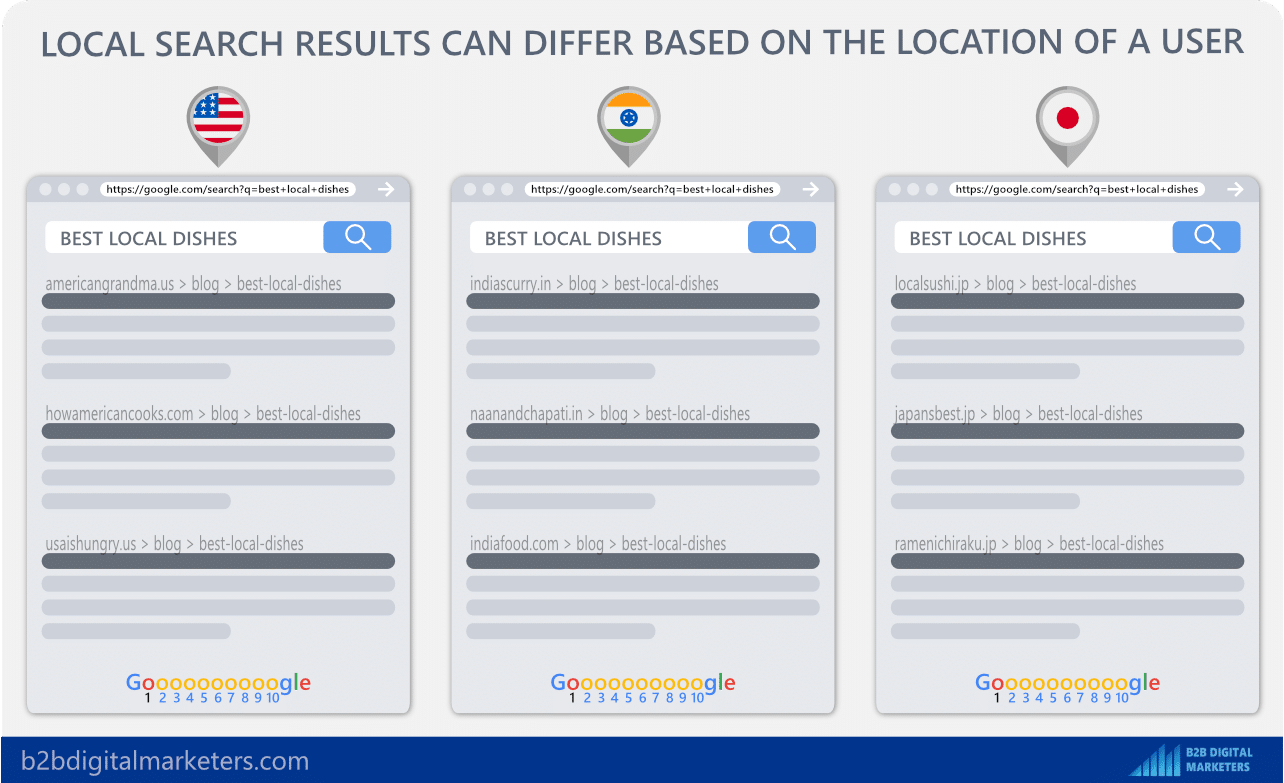
However, what most of the local business owners do is that they want to have the general TLDs like .com and others to have open doors in case they want to go global, I guess.
But what they don’t realize is that it makes it harder for them to target the local searches at first, so they can grow into the international business you want.
Plus, in most cases, local businesses stay local and barely expand in another region, but rather expand their offerings in the region and expand into other local industries instead.
Therefore, not using related ccTLDs if you are a local business could hurt your SEO performance for your most important money keywords.
And even if you get so successful to go international, you will have the budget to migrate your website to the general domain.
Additionally, it’s much easier to compete for local search terms than international, giving you a much bigger chance to drive SEO ROI sooner.
Practice #15: Use Exact and Contextual Anchor Text to Match Your URL Primary Keyword
And the last URL SEO best practice I have for you is to use exact and contextual anchor text to match your URL’s primary keyword.
For example, when I wrote the article on Link Building Strategies, I have used various anchor texts to link to the page.
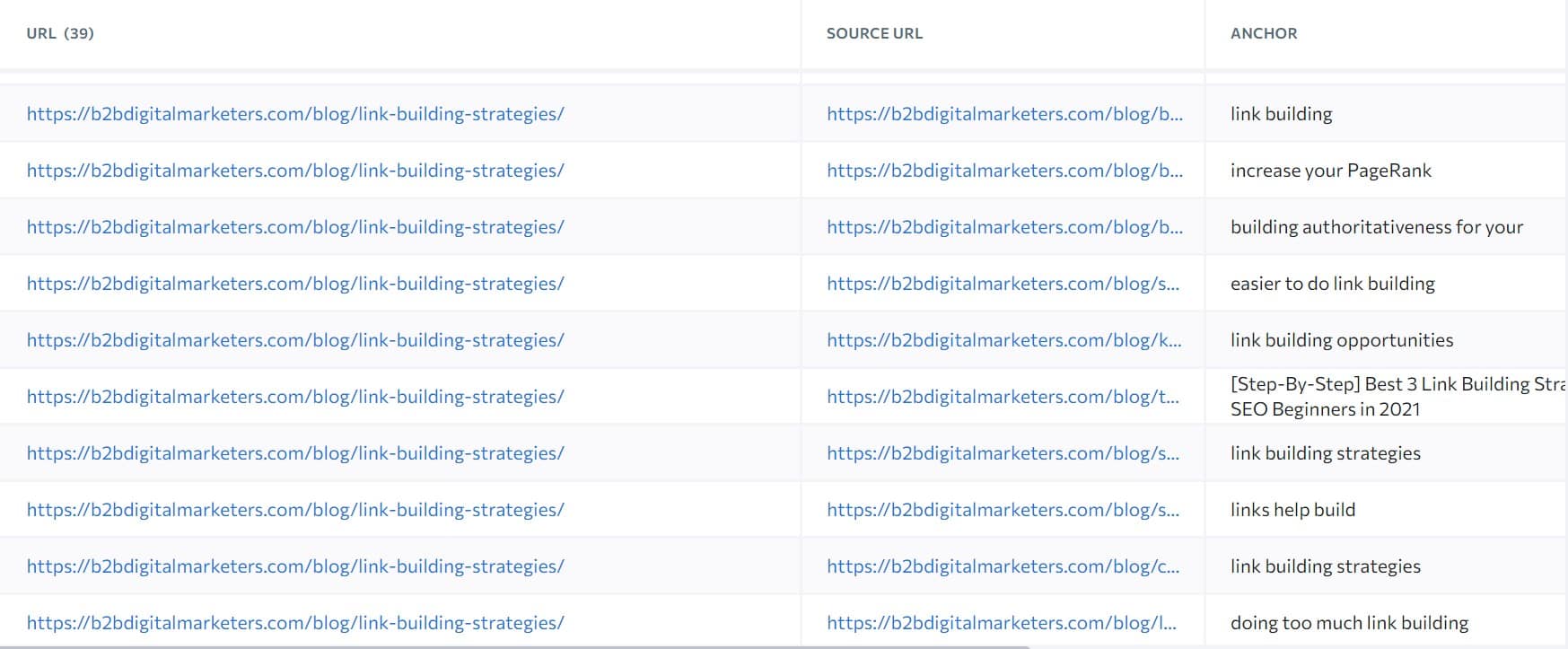
And as you can see, I have also used the exact keyword anchor text that is matching the primary keyword located in the URL.
Because all these on-page SEO techniques make it easier for Google to understand what’s your content about as you need to realize Google doesn’t read your content but is using math and algorithm to figure out what’s going on on your web pages to rank your content appropriately.
Therefore, the easier you make it to understand your content, the better ranking you can expect from Google, and using anchor text that matches your URL primary keyword is an excellent way to do that.
Final Advice for SEO-friendly URL
When it comes to creating SEO URLs for your blog posts or web pages you can see, there are a lot of nitty-greedy things and SEO best practices you can apply.
However, as I said, URLs were created for users and that should be your focus. If you are creating URLs for your users, you have already done 50% of the best practices for SEO URLs.
I hope this helps you to improve your ranking and increase your SEO knowledge. Please let me know if I forgot something or your feedback on my YouTube Channel.
Related Articles:
- SEO Strategy: How to Start with SEO [2022]
- How to Find profitable Keywords for Your Website?
- How To Check Website Position in Google
- 13 Biggest Reasons Why is My Business Not Showing Up on Google?
- Off-Page SEO Activity List: Increase Online Reputation in 2022
- How to Find Backlinks to a Page and Website
- 9 Best Ways How to Find All Pages on a Website
- What Are Contextual Backlinks in SEO and How to Get Them
Also, check out our SEO hub page to find all our SEO resources.
Disclaimer
Some of my links are affiliate links, which means if you purchase something, I might get some small commission as a reward for reference. Of course, I am actively using all these services and products, and I only affiliate products or services I have full trust in their quality!
Support the B2BDigitalMarketers
Hey, Eduard here.
As a solo blogger with limited resources, I need your support to keep creating in-depth SEO content like this. Please consider joining my Patreon community to help this site grow.
Your pledge – no matter how small – will enable me to dedicate more time to sharing actionable tips and strategies. With your help, I can take this project to the next level and really make a difference for other SEOs and marketers.
I would sincerely appreciate you joining me on this journey as a founding patron. Together, we can build an amazing resource hub. Hope to see you on the inside – thanks for your trust and support!








